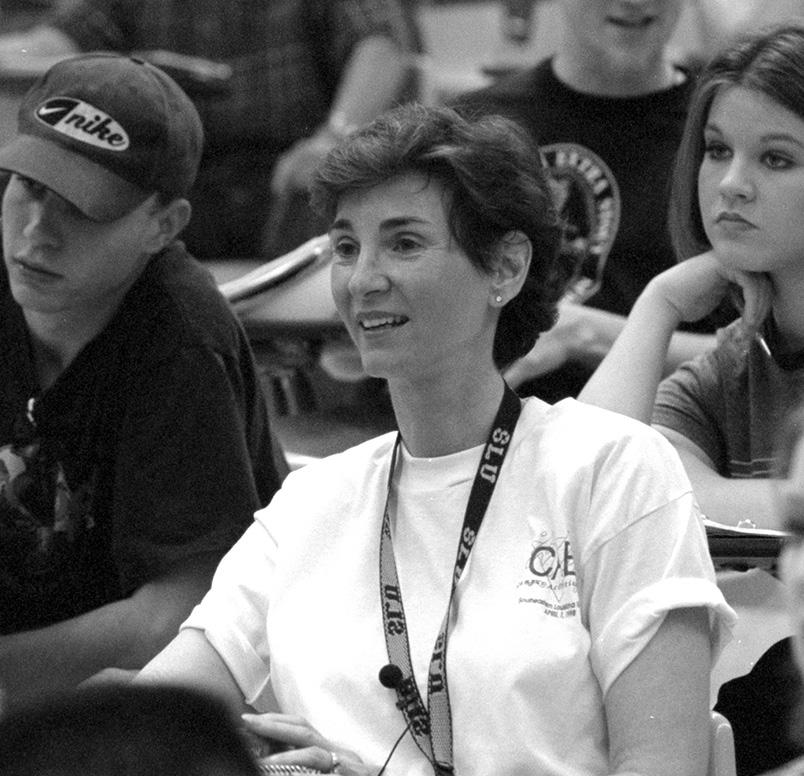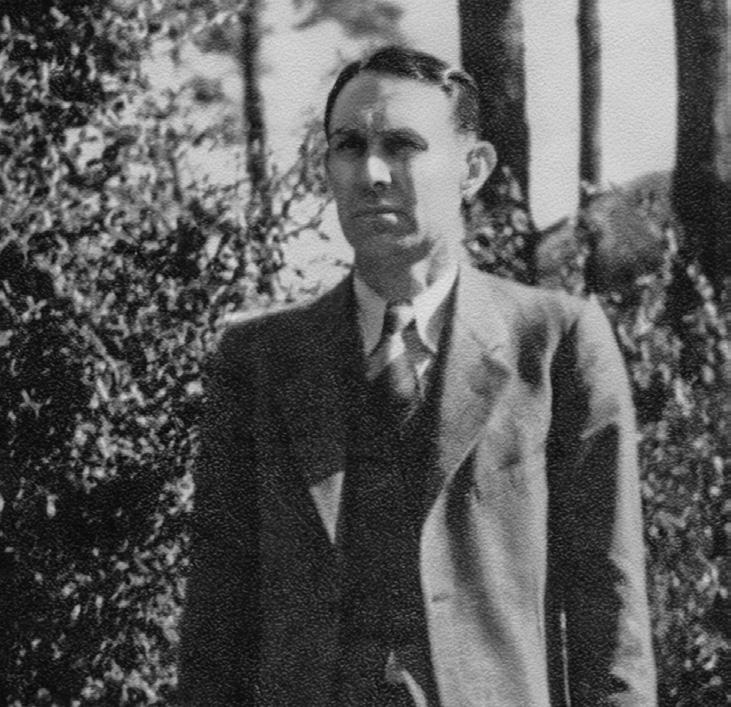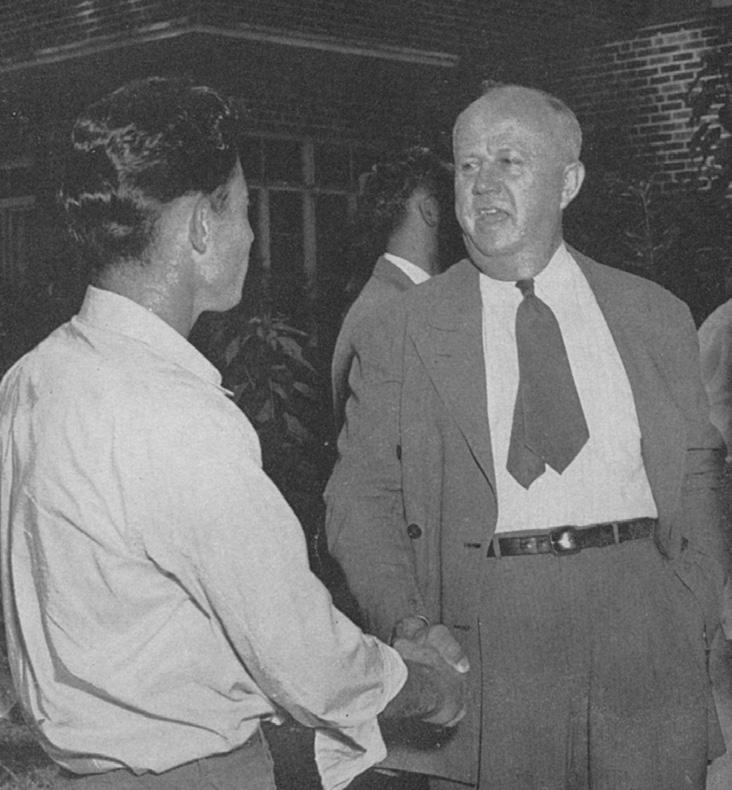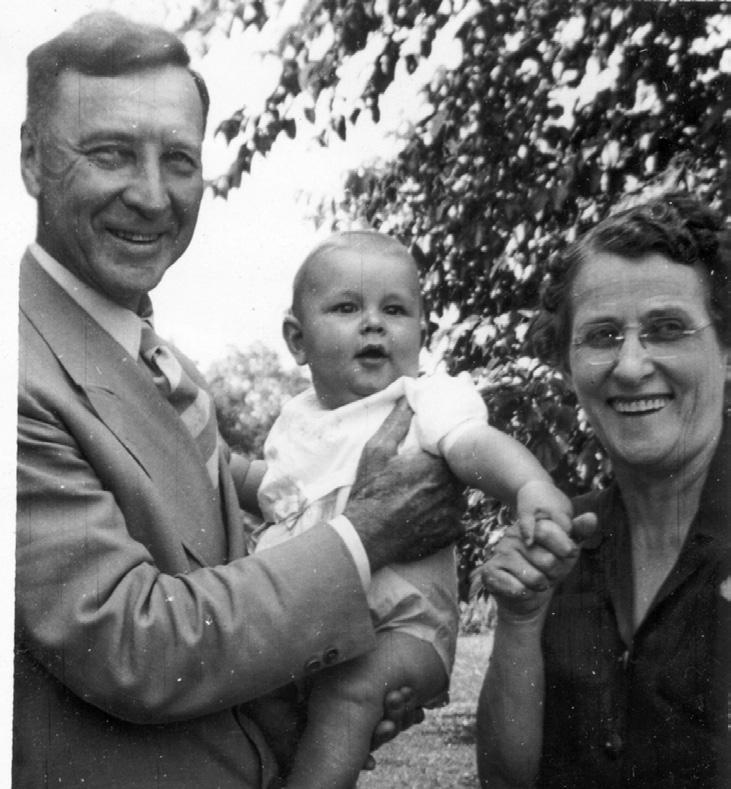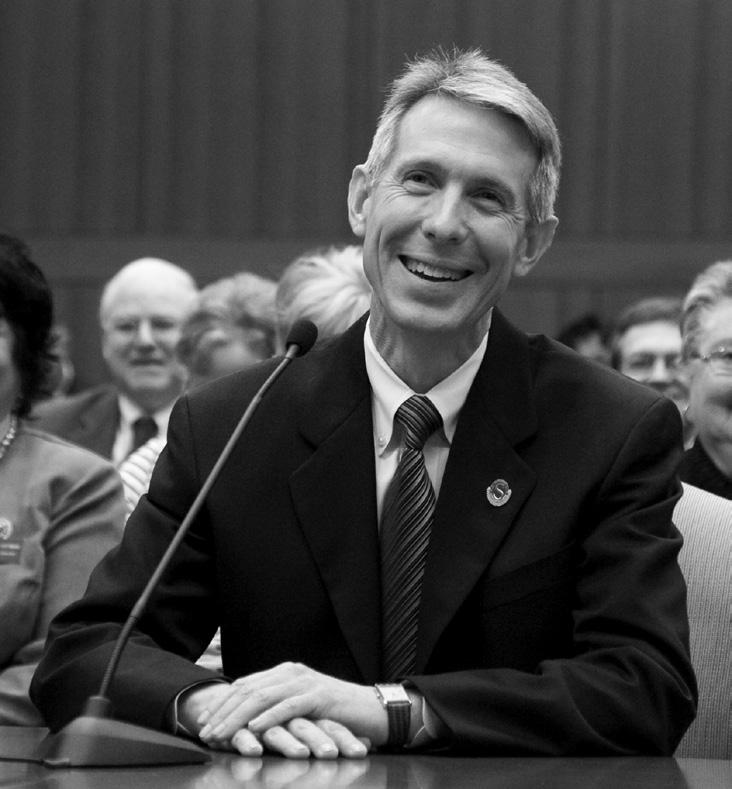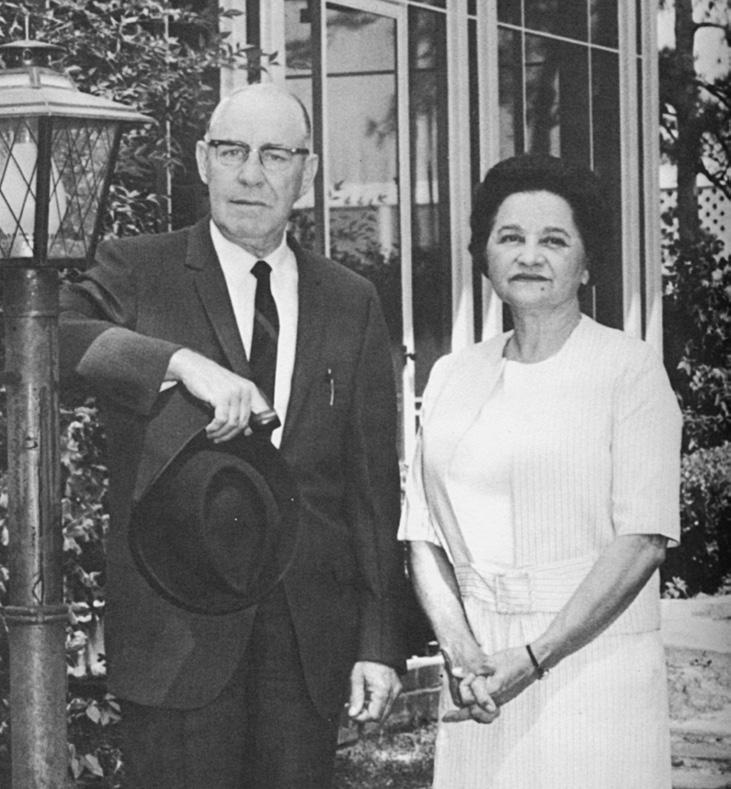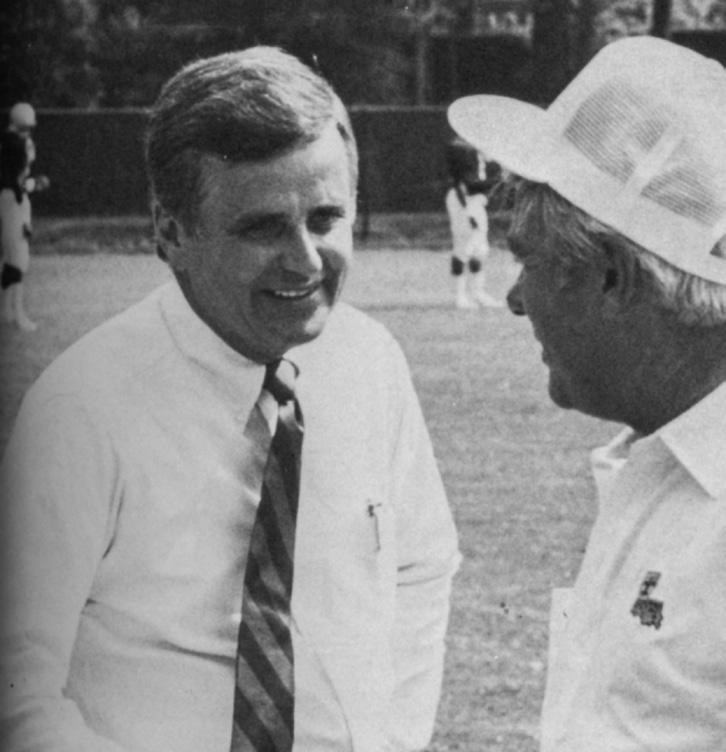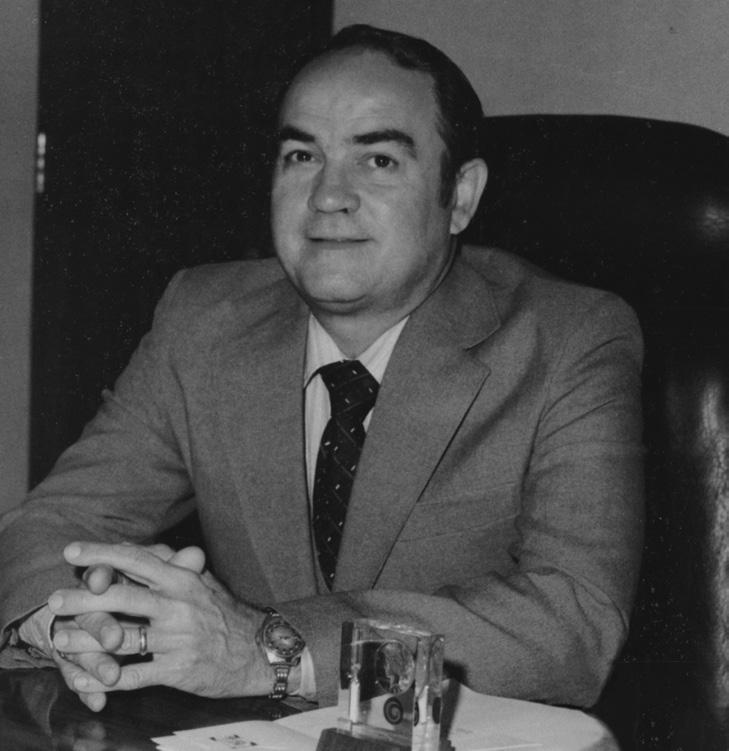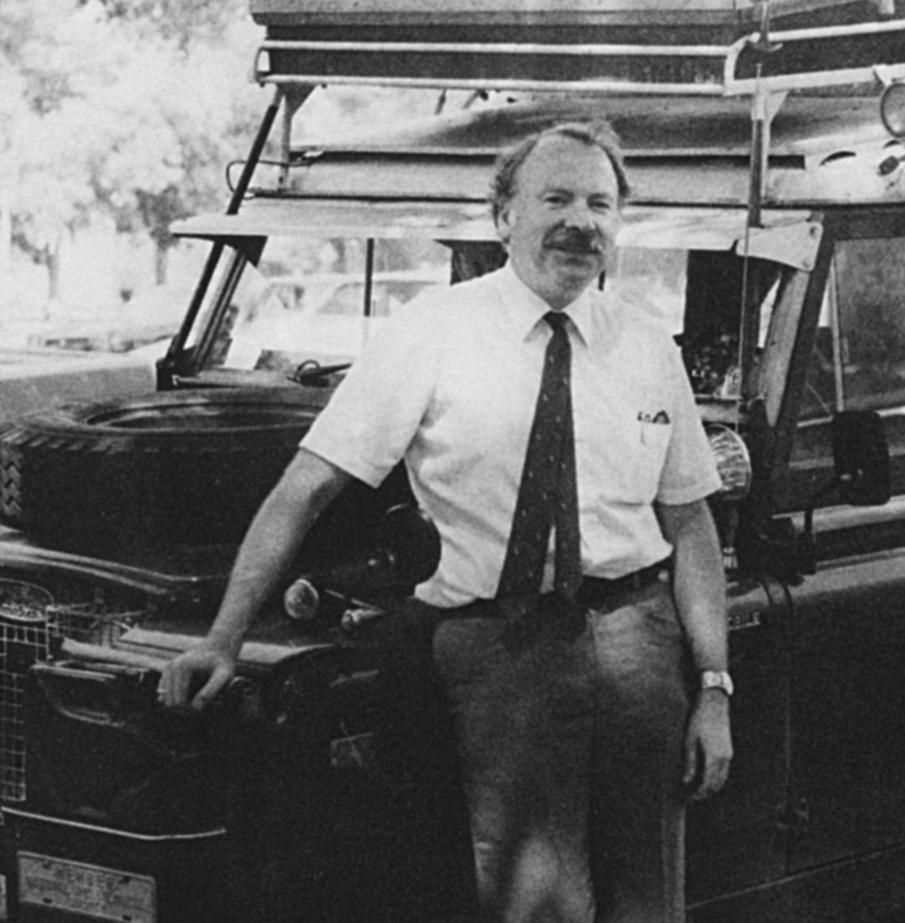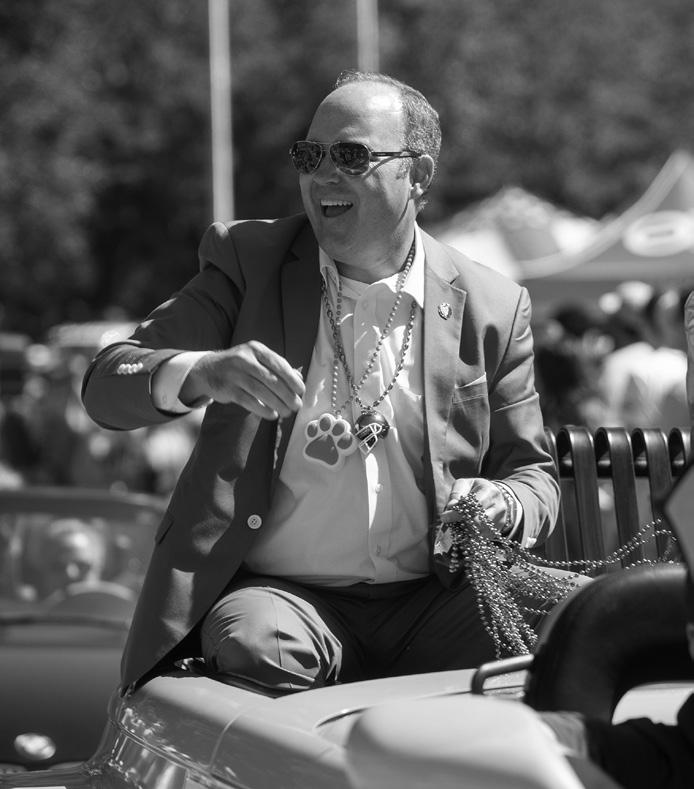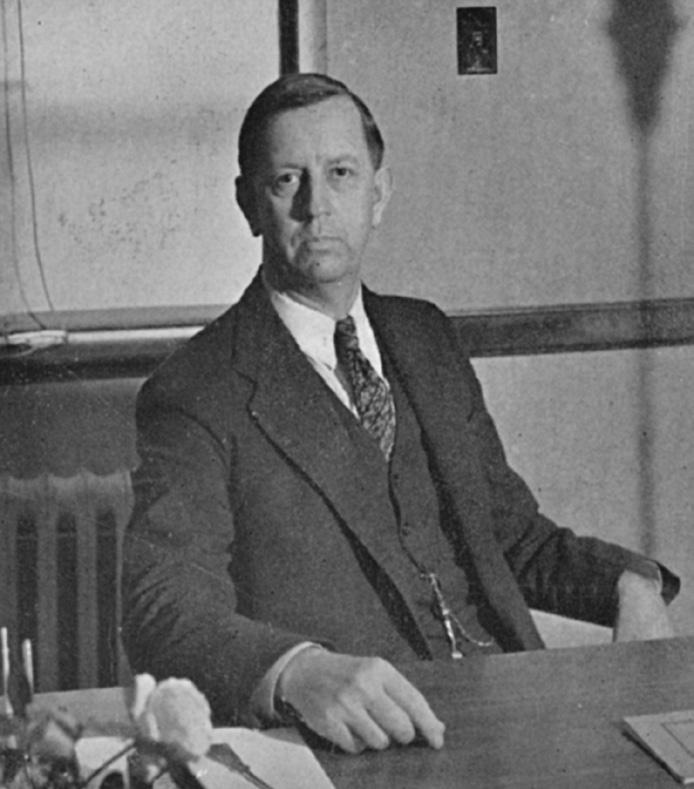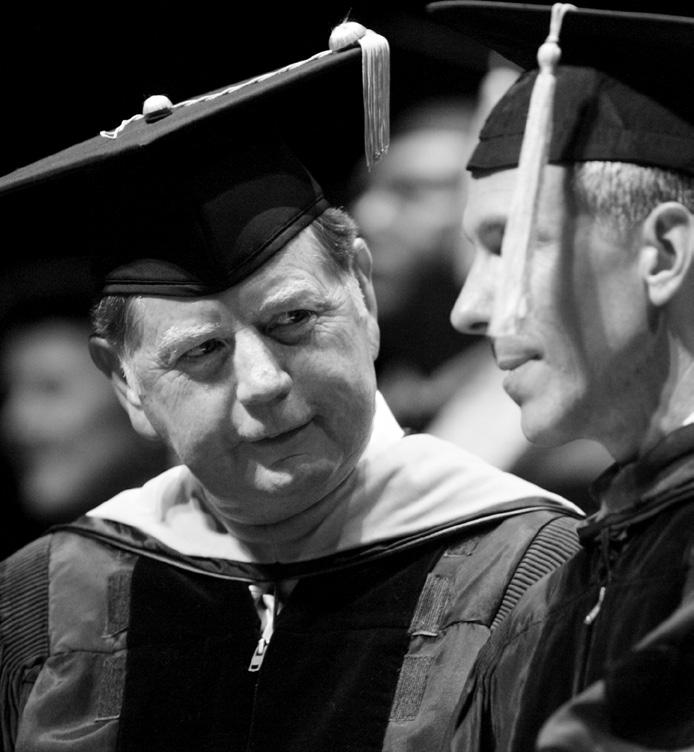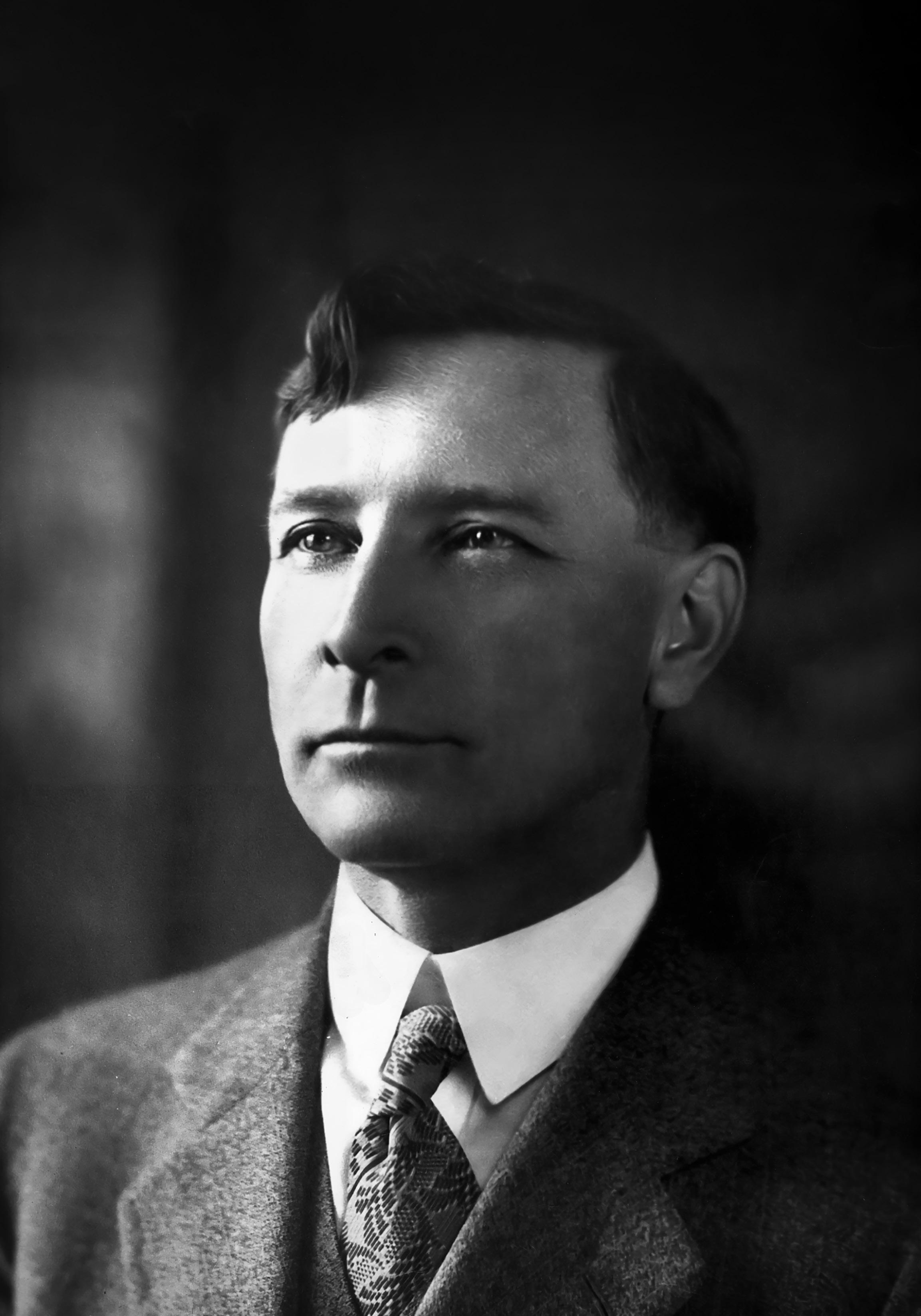

THE PRESIDENTS OF SOUTHEASTERN
THE PRESIDENTS OF SOUTHEASTERN
1925–2025
Linus Arthur Sims 1925–1933
Yves Leon Fontenot 1933–1937
Joseph Leon Clark 1937–1944
George William Bond 1944–1945
Gladney Jack Tinsley 1945–1951
Clark Leblanc Barrow 1952–1953
Luther Haley Dyson 1951–1952 and 1953–1967
J. B. Wooley 1967–1968
Clea Edward Parker 1968–1980
James Larry Crain 1980–1986
Grant Warren Smith 1986–1995
Sally Ilene Clausen 1995–2001
Michael Randolph Moffett 2001–2008
John Luther Crain 2008–2023
William Scott Wainwright 2023–Present
For a century, Southeastern Louisiana University has stood as a beacon of educational excellence, community engagement, and transformative leadership. From its humble beginnings in 1925, when Linus Sims dreamed of establishing a college to serve the citizens of Hammond and beyond, Southeastern has grown into a thriving institution that inspires generations of students, alumni, staff, and faculty. The university’s legacy is inseparable from the visionaries who have guided its path forward—the presidents whose dedication and leadership have shaped Southeastern’s identity and secured its place as a cornerstone of higher education in Louisiana.
This book celebrates the extraordinary leaders who have held the presidency at Southeastern, each of whom brought unique perspectives to their tenure, navigating the challenges and triumphs of their time. From the pioneering efforts of Sims, who laid the foundation for what would become one of the region’s most respected institutions, to the innovative strategies of William S. Wainwright, who is charting a bold course for Southeastern’s future, these presidents have embodied the values of perseverance, adaptability, and an unwavering commitment to excellence.
Through their stories, we glimpse the evolution of Southeastern—its physical campus expanding to accommodate growing student populations, its academic programs diversifying to meet the demands of an everchanging world, and its cultural and community impact deepening with each passing decade. Together, these narratives form a rich tapestry that honors the past while illuminating the path to Southeastern’s next century.

Linus Arthur Sims
1925–1933
Linus A. Sims, the founding president of Southeastern, is celebrated as the visionary who transformed Hammond’s aspiration of becoming a “college town without a college” into reality. Educated at several different universities across the US, Sims brought a diverse background to his role, including experiences as a streetcar conductor, shoe salesman, farmer, and preacher. His declaration “We started with nothing but faith” epitomizes his relentless determination to establish the institution. Inspired by a 1925 speech by Louisiana’s Superintendent of Public Education T. H. Harris, advocating for locally supported junior colleges, Sims seized the moment and galvanized community leaders like Oscar Donaldson and Lucius McGehee to champion the cause. Their efforts culminated in the establishment of Hammond Junior College on September 14, 1925, just nine months after Sims conceived the idea.
Sims’ leadership in the institution’s early years was marked by his unwavering commitment to its survival and growth. He personally oversaw the hiring of faculty, including D Vickers, whose contributions helped shape Southeastern’s academic foundation, and recruited students, ensuring the college had a graduating class in its first year. His pioneering vision extended beyond academics, as he also emphasized the importance
of smaller class sizes, quality instruction, and affordable education. Operating initially out of two rooms in Hammond High School, the fledgling college rapidly outgrew its facilities, prompting Sims to lead efforts to acquire the Hunter Leake estate in 1927, which became the heart of Southeastern’s current campus.
Sims’ personal sacrifices underscore his dedication to the institution. From returning his paycheck to keep the college running to involving his family in unpaid roles, Sims exemplified selflessness in service to education. Despite facing fierce political and financial challenges, he secured state recognition for the college’s curriculum and ensured the transferability of its credits, which bolstered its reputation and credibility. By the time he left in 1933, Sims had laid a sturdy foundation for Southeastern, setting it on a trajectory of growth and excellence.
Even after leaving his post, Sims continued to contribute to Louisiana's education system, reinforcing his belief that education transforms lives and communities. His legacy lives on through Southeastern’s enduring commitment to access and quality education, a vision that continues to shape the institution a century later.
We started with nothing but faith. . . . The ambition of my entire life is now being consummated, and it is only natural that the advancement of our school in prestige and usefulness should be the greatest personal desire I might have.
Yves Leon Fontenot
1933–1937
Y. L. Fontenot assumed the Southeastern presidency during the Great Depression, a time of immense financial strain. A Louisiana native with decades of teaching experience and a term in the state legislature, Fontenot brought both educational and political expertise to the role. Despite limited funding, he aimed to elevate Southeastern by advocating for accreditation, improving faculty pay, building academic facilities, and establishing a proper collegiate library.
Fontenot’s insistence on prioritizing academics over athletics often placed him at odds with community and state leaders, who pushed for a larger football stadium. Nevertheless, his leadership coincided with federally funded New Deal projects, such as those by the Works Progress Administration, which provided Southeastern with its first permanent campus
buildings, including McGehee Hall. These structures not only advanced the college’s development but also offered jobs to struggling families in the Florida Parishes.
Fontenot’s lobbying efforts bore fruit in 1937 when Southeastern was authorized to offer bachelor’s degrees, cementing its place as a four-year institution. However, his confrontations with the State Board of Education over funding priorities ultimately led to his dismissal.
After leaving Southeastern, Fontenot continued his career in education as superintendent of the State School for the Blind in Baton Rouge. His tenure at Southeastern is remembered for his unwavering focus on academic excellence and his role in guiding the institution through one of its most formative and challenging periods.
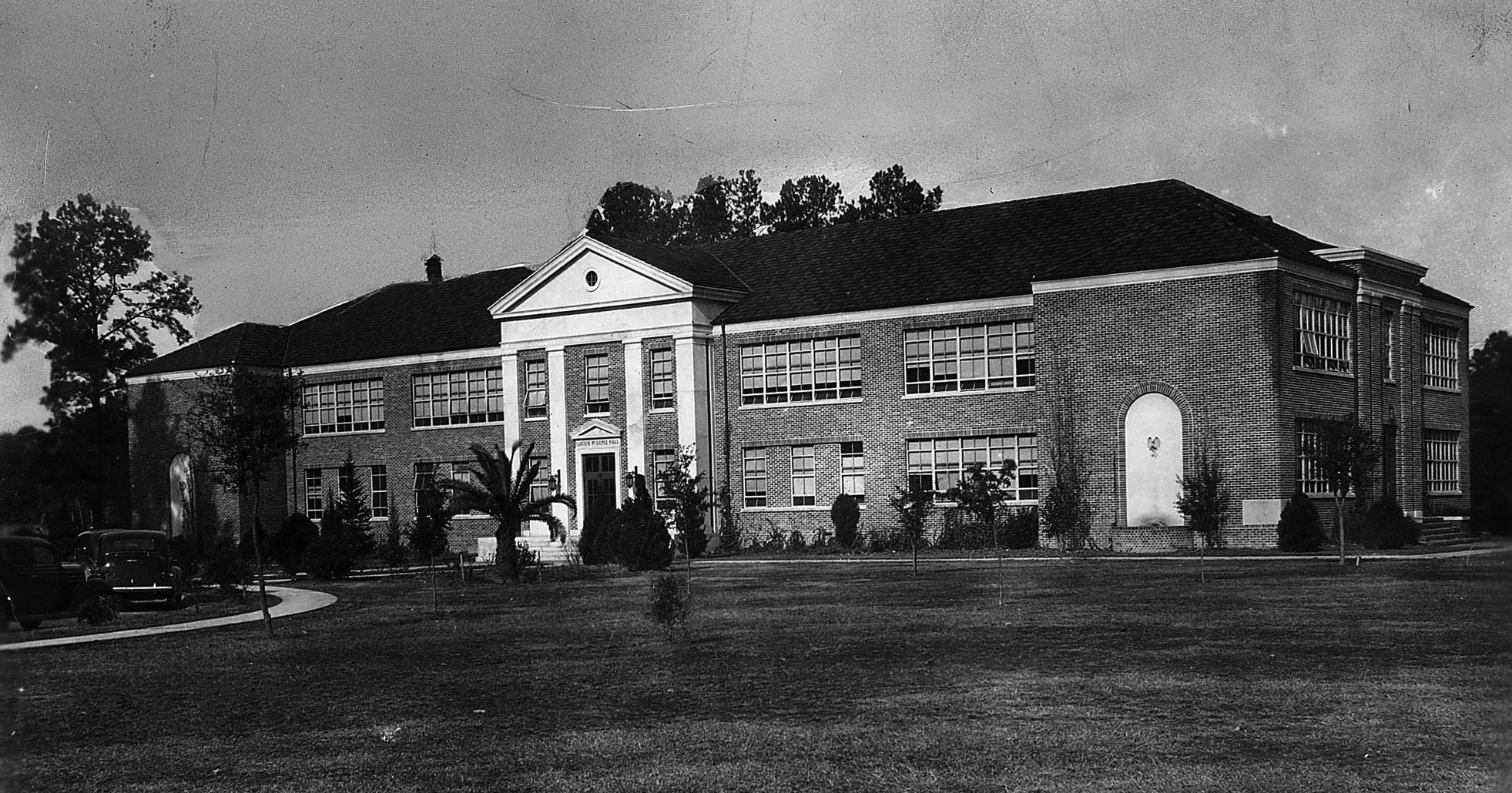
McGehee Hall, 1934

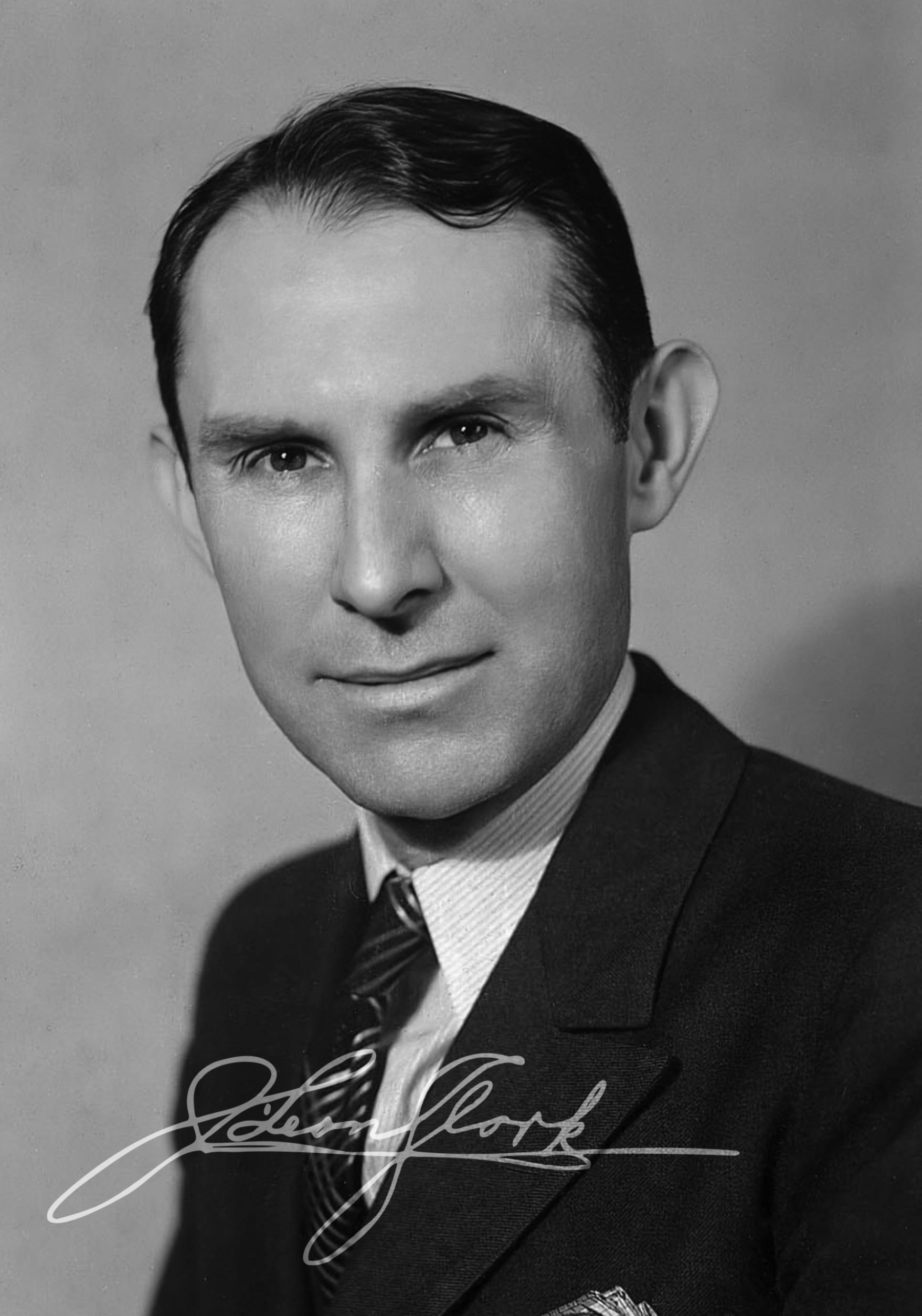
Joseph Leon Clark
1937–1944
J. Leon Clark’s tenure as president was shaped by his conservative budget policies and pragmatic leadership. Born on October 14, 1896, in Walters, Louisiana, Clark began his career as a teacher before earning advanced degrees, including a Ph D from the University of North Carolina in 1931. Before his presidency, he served as a high school principal, Southeastern’s director of teacher training, and a social sciences professor.
Appointed president in 1937, Clark inherited a growing institution that had recently transitioned into a four-year college under his predecessor. Building on this milestone, Clark played a crucial role in strengthening Southeastern’s academic offerings and implementing a four-year curriculum. His tenure also saw significant infrastructure expansion, including projects like Strawberry Stadium, a dual-purpose facility housing athletic
spaces, dormitories, and social areas. These Works Progress Administration projects symbolized Southeastern’s commitment to growth despite limited resources.
While Clark’s leadership advanced Southeastern’s development, his strict financial management and strained relationships with faculty and community members led to growing tensions, culminating in his removal in 1944. However, his contributions to Southeastern’s growth during a turbulent era remain significant.
After his departure, Clark remained committed to education, teaching sociology at Louisiana State University until his death in 1961.
The Apostle Paul beheld in a vision a man of Macedonia beseeching him to come over into Macedonia and help them in their great need. Although we have had no Pauline vision, we are facing the vivid realization that Southeastern is in great need and, like the man in Paul’s vision, we are sending our distress signal to the friends of Southeastern for increased support in forwarding the work that has already begun.
George William Bond
1944–1945
George W. Bond served as acting president during a transitional period from 1944 to 1945. A quiet and business-oriented leader, Bond was known for his strong organizational skills and ability to maintain stability during a critical time for the institution. His tenure was marked by the challenges of managing the college in the aftermath of World War II, a time when higher education institutions across the country were beginning to see an influx of returning veterans and shifting societal priorities.
Born on April 6, 1891, in Summers, Arkansas, Bond brought extensive experience in education to his role. Before his time at Southeastern, he served as a superintendent of schools in Arkansas, a high school principal, a professor and then dean at Louisiana Tech University, and president of Tech from 1928 to 1936. His background in education and administration made him well-suited to lead Southeastern during a year of transition.
During his brief presidency, Bond focused on maintaining continuity and addressing the administrative needs of the growing college. His steady leadership ensured that Southeastern’s academic programs remained stable and prepared the institution for future growth under new leadership. Although his tenure was short, Bond’s ability to navigate the challenges of this period helped set the stage for the dynamic expansion that would follow under Gladney Tinsley.
After his time at Southeastern, Bond returned to Tech, where he served as a dean until 1956. He later joined Harding College in Searcy, Arkansas, as a professor of education, where he continued his lifelong commitment to fostering academic excellence until his retirement in 1964.
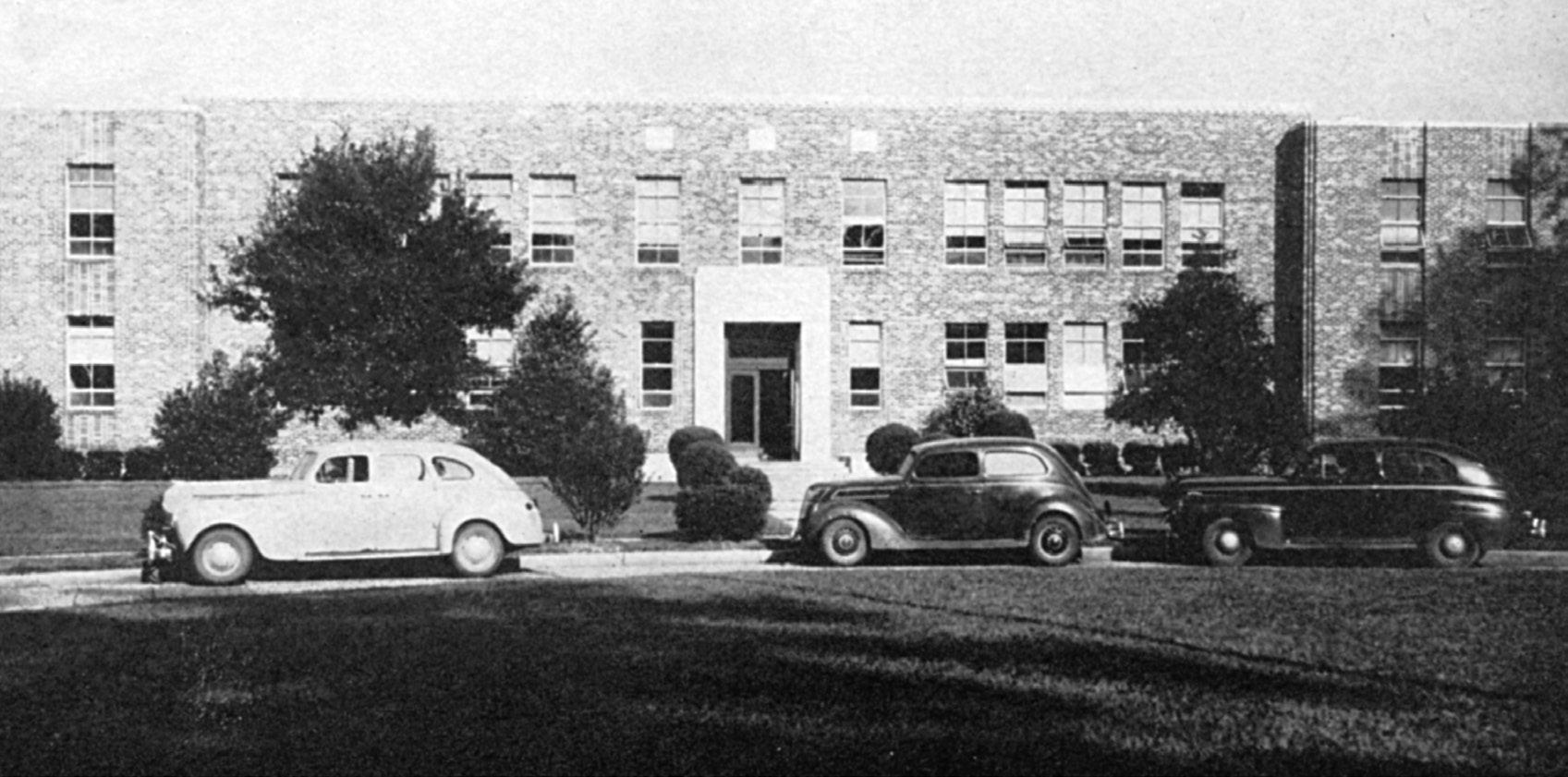
Meade Hall, 1945
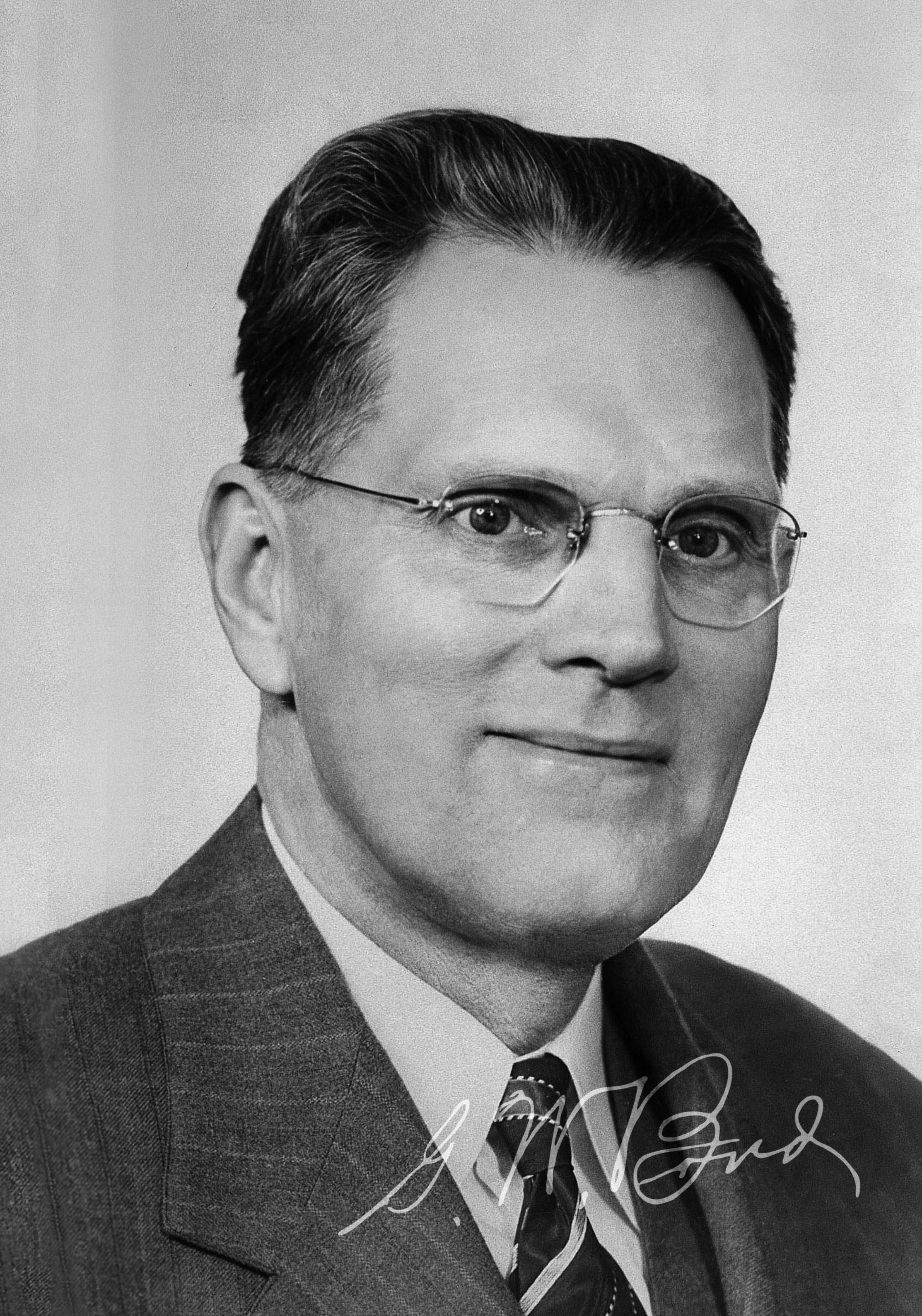
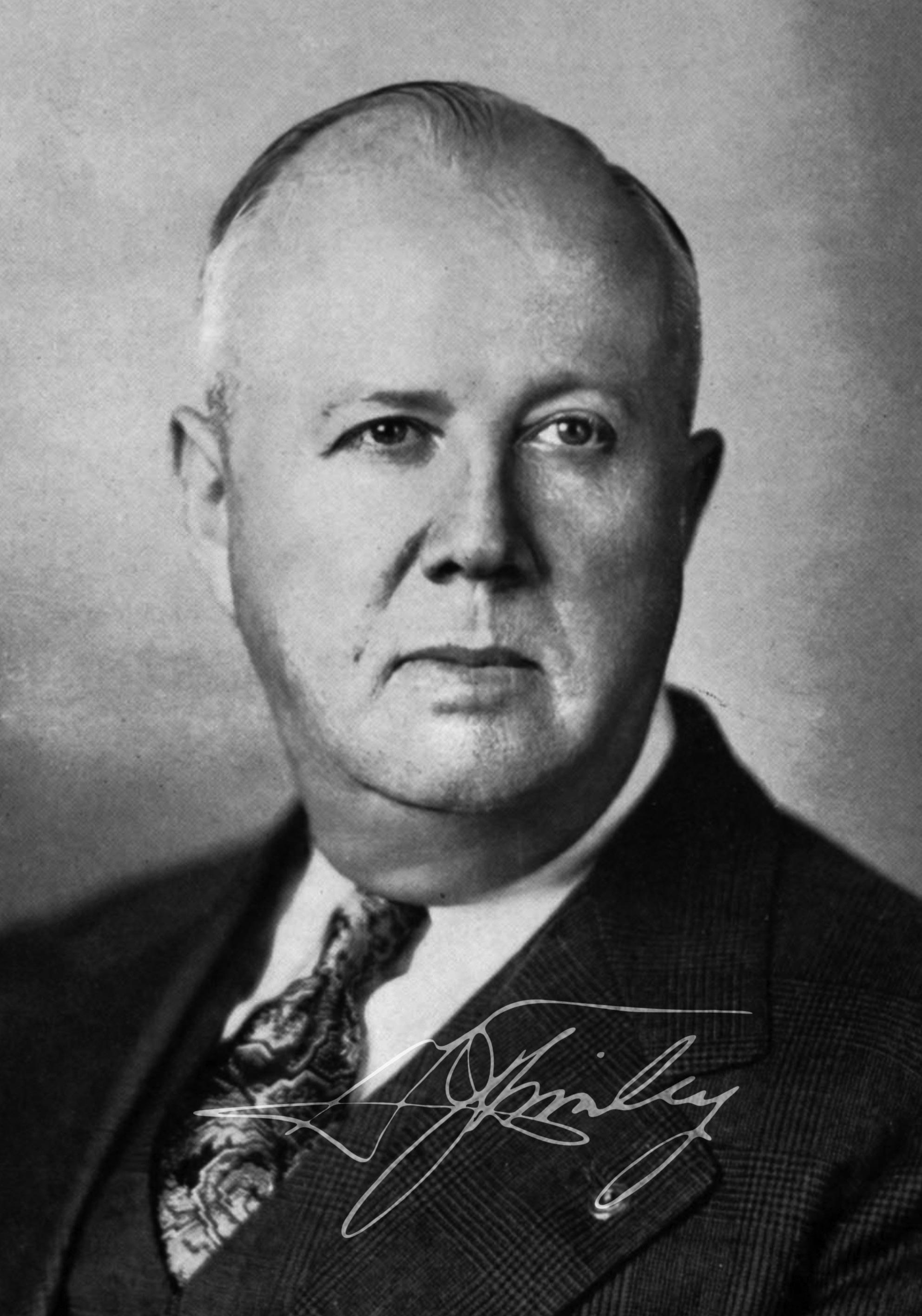
Gladney Jack Tinsley
1945–1951
Gladney J. Tinsley is remembered as one of Southeastern’s most transformative and beloved presidents. His tenure, beginning in July 1945, marked the start of Southeastern’s “Golden Era,” coinciding with post-war optimism and growth.
Born on June 19, 1896, in Haynesville, Louisiana, Tinsley earned a doctor of education from Stanford University in 1931. He brought to Southeastern not only his academic expertise but also a dynamic personality and unwavering dedication to institutional progress.
Tinsley oversaw unprecedented growth during his presidency. The student body swelled, largely due to returning veterans under the GI Bill, and campus infrastructure expanded to accommodate the surge. The footprint of campus also greatly grew through the purchase of surrounding land, bringing Southeastern up to 365 acres. An avid gardener and agriculture expert with a variety of camellia named after him, he was also responsible for implementing the camellia garden behind presentday Garrett Hall.
Notable other achievements included obtaining Southeastern’s full accreditation from the Southern Association of Colleges and Schools (SACS) in
1946, an accomplishment he regarded as his greatest contribution.
A visionary, Tinsley emphasized shared governance and sought to foster community among students and faculty. He created teacher training conferences and introduced programs in industrial arts and business, diversifying Southeastern’s academic offerings. His charisma inspired confidence in Southeastern’s future, a sentiment captured by his contemporary Luther Dyson: “Dr. Tinsley’s greatest contribution—and there were many—was the spirit of optimism, which he generated among the faculty and throughout the area served by the institution. There was a general ‘uplifting of the spirit’ and a feeling of confidence engendered about the future that replaced some of the doubts that had existed.”
Tragically, Tinsley’s tenure ended abruptly when he passed away from a heart attack on December 8, 1951. His loss was deeply felt across campus, and the legacy of his leadership endures.
Landmarks such as Tinsley Hall and the Tinsley Camellia Gardens stand as enduring tributes to his contributions, while his influence continues to shape Southeastern’s mission and identity.
Southeastern Louisiana College has been a rapid and successful accomplishment in a short, hectic quarter-century. The personalities involved deserve much credit. Their success and the spirit and support of the people of the area furnish conclusive evidence of the need and the soundness of their vision.
Clark Leblanc Barrow
1952–1953
Clark L. Barrow’s presidency, though brief, left an indelible mark on Southeastern history. Born in Plaquemine, Louisiana, on June 8, 1894, Barrow held extensive experience in education before joining Southeastern, having served as a teacher, principal, superintendent of East Baton Rouge Parish Schools, and in various roles within Louisiana’s State Department of Education. His academic credentials included a doctorate in education from Columbia University in 1939.
Barrow’s leadership style was characterized by accessibility and a hands-on approach. He was known for taking horseback rides across campus, often peeking into classrooms and greeting students, adding a personable and memorable flair to his presidency. During his short tenure,
Barrow emphasized community engagement and bolstered Southeastern’s reputation in the region. While he only served for a year, his impact was felt in his efforts to strengthen the university’s connections with its surrounding community.
In 1953, Barrow left Southeastern to become the director of higher education in the Louisiana State Department of Education, a role for which his presidency had uniquely prepared him. Despite the brevity of his time at Southeastern, Barrow’s colorful personality and dedication to education remain fondly remembered as part of the university’s history.
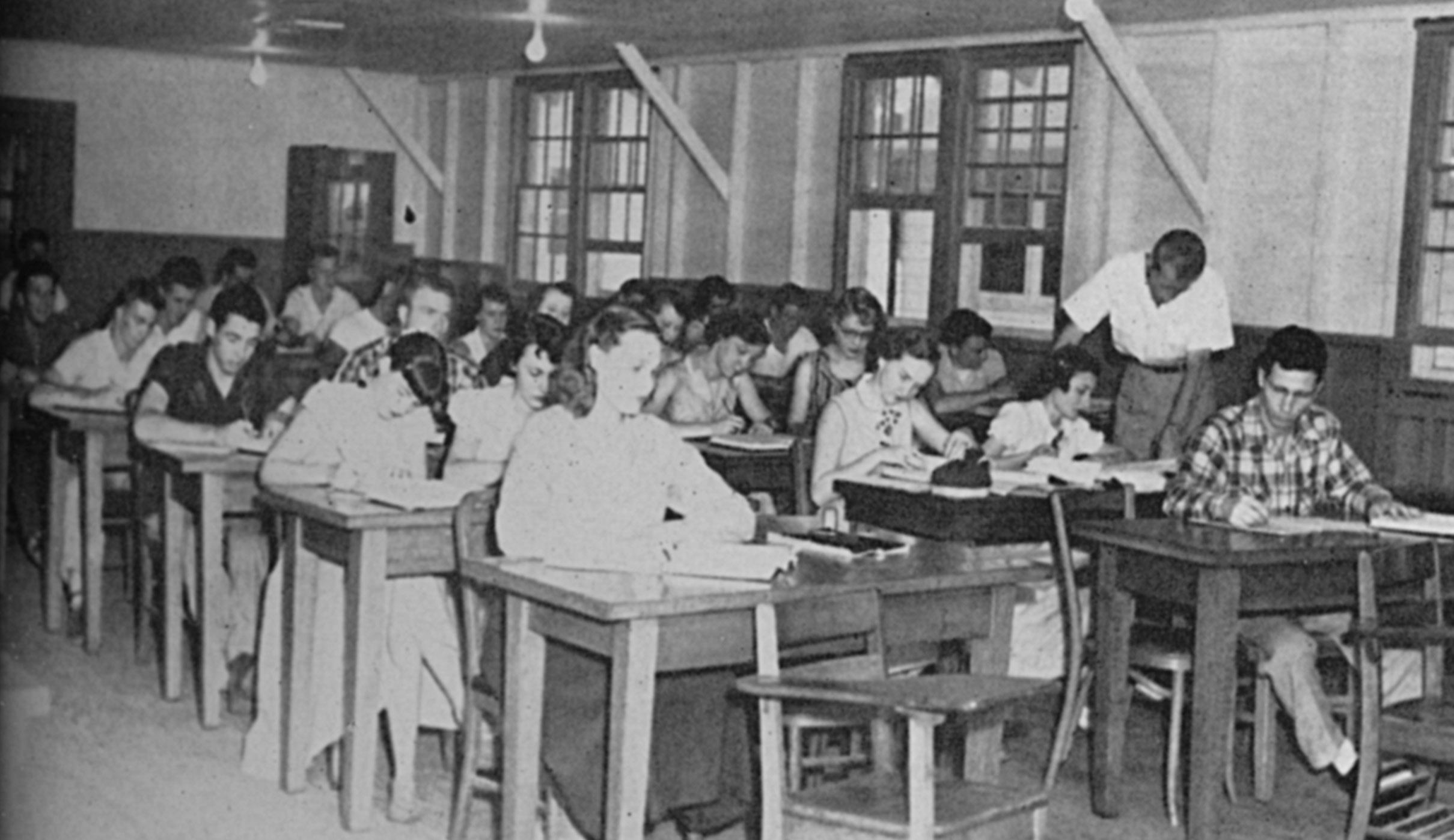
Classroom, 1953
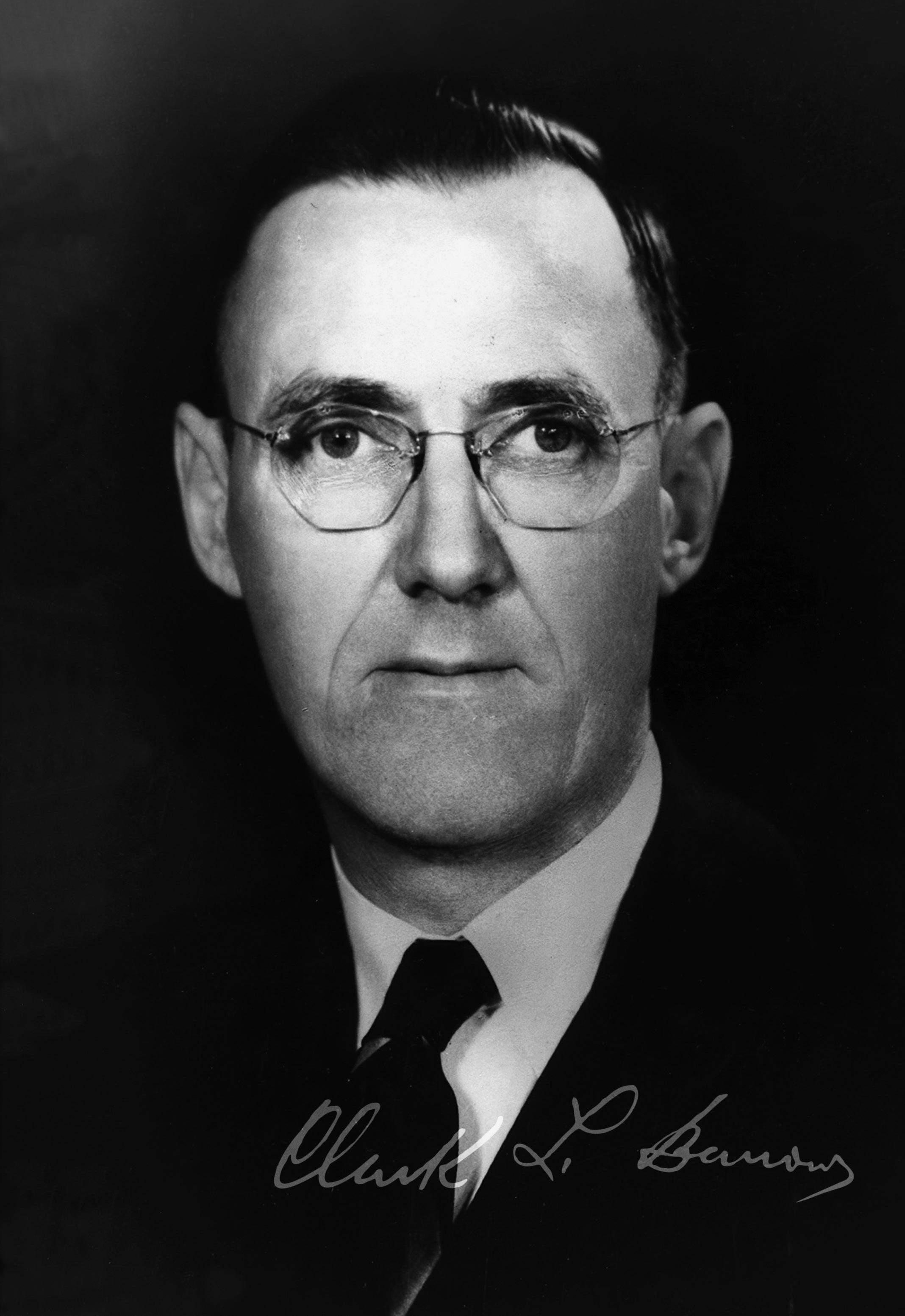
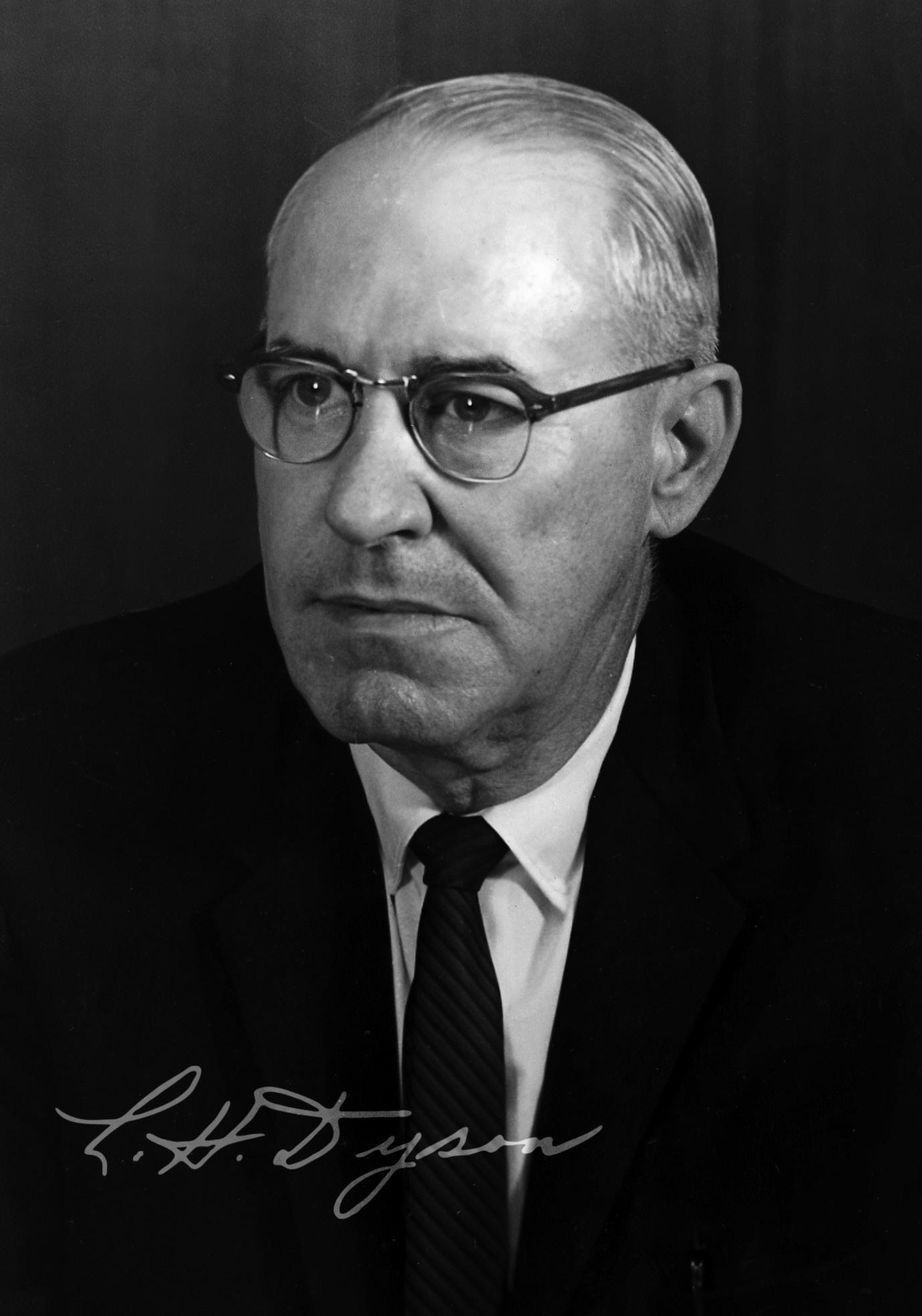
Luther Haley Dyson
1951–1952 | 1953–1967
Luther Dyson’s 14-year presidency was a transformative era for Southeastern, marked by significant academic and physical expansion.
Known as the “Gentleman Scholar,” Dyson brought a measured, diplomatic leadership style that balanced practicality with an unwavering focus on improving the institution. Born and educated in Louisiana, Dyson obtained his PhD from Louisiana State University and began his career teaching in Tangipahoa Parish schools in 1930. His experience as a teacher, school supervisor, and director of teacher training first led him to Southeastern in 1945, where he served as dean of the college, acting president in 1951 to 1952 following his close friend Tinsley’s death, and then finally president following Barrow’s resignation.
Under Dyson’s leadership, the college experienced exceptional growth. He spearheaded the addition of new classroom buildings, science facilities, dormitories and married student housing, a cafeteria, and a coliseum. Dyson’s administration
also saw a rise in academic standards, requiring students to maintain higher GPAs to progress in their studies and professionalizing faculty hiring and evaluation practices. His tenure established Southeastern as a leader in regional higher education, earning respect for its academic rigor and campus improvements.
Dyson’s collaborative approach extended beyond campus, as he worked closely with state officials to secure funding for Southeastern’s expansion. His efforts laid the foundation for many of the university’s hallmark programs and facilities.
When Dyson retired, Southeastern had evolved from a young college into a mature institution, prepared to meet the demands of an ever-growing student population. His many years of leadership left an enduring legacy of progress and excellence that continues to define Southeastern to this day.
I’m very proud to see the growth that’s taken place in the years I’ve been away. It’s just nostalgic. I miss it, really. It was a very rewarding 23 years—possibly the best part of my professional life. Part of my being is still at Southeastern; it always will be.
J. B. Wooley
J. B. Wooley stepped into the role of acting president during a critical period, at the time of the illness of President Luther Dyson in 1967. While his tenure as acting president lasted less than a year, Wooley’s leadership ensured stability and continuity during a time of uncertainty. Known for his straightforward, no-nonsense approach, Wooley ran the college with efficiency and a deep sense of responsibility.
Before his time as acting president, Wooley built a distinguished career in education, including administrative roles at Southeastern that prepared him to lead during this transitional period. His experience as an educator and administrator equipped him to manage the operational demands
of the institution while maintaining its high academic standards. Colleagues praised Wooley’s firm yet compassionate leadership, with many describing him as a strong advocate for faculty and students alike.
After Dyson formally retired in 1968, Wooley returned to his previous administrative duties, stepping aside for Clea E. Parker to take over as president. Although Wooley’s time at the helm was brief, his steady hand and pragmatic leadership ensured that Southeastern continued to thrive, setting the stage for the college’s next era of growth and development.
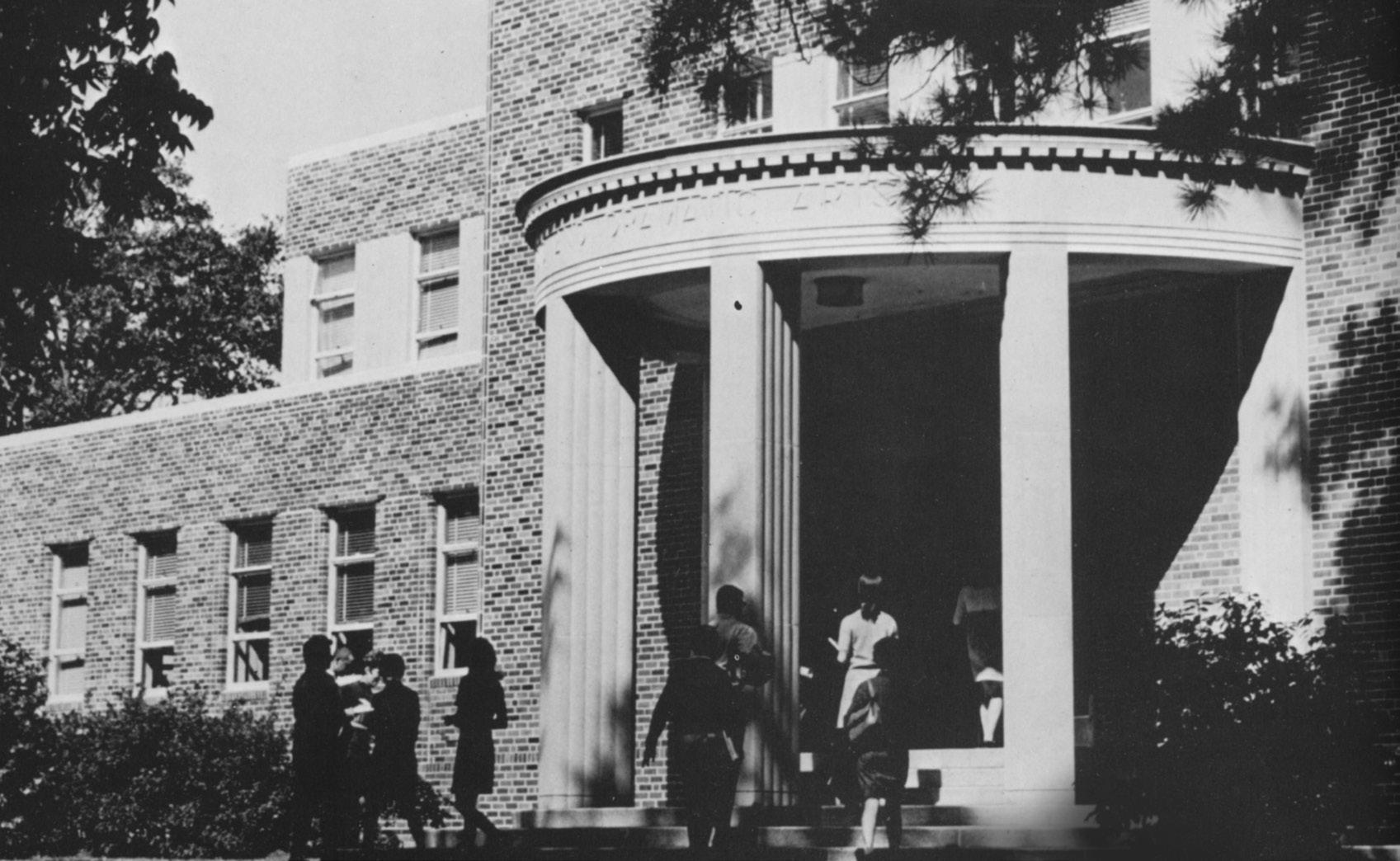
Pottle Music Building, 1968
1967–1968
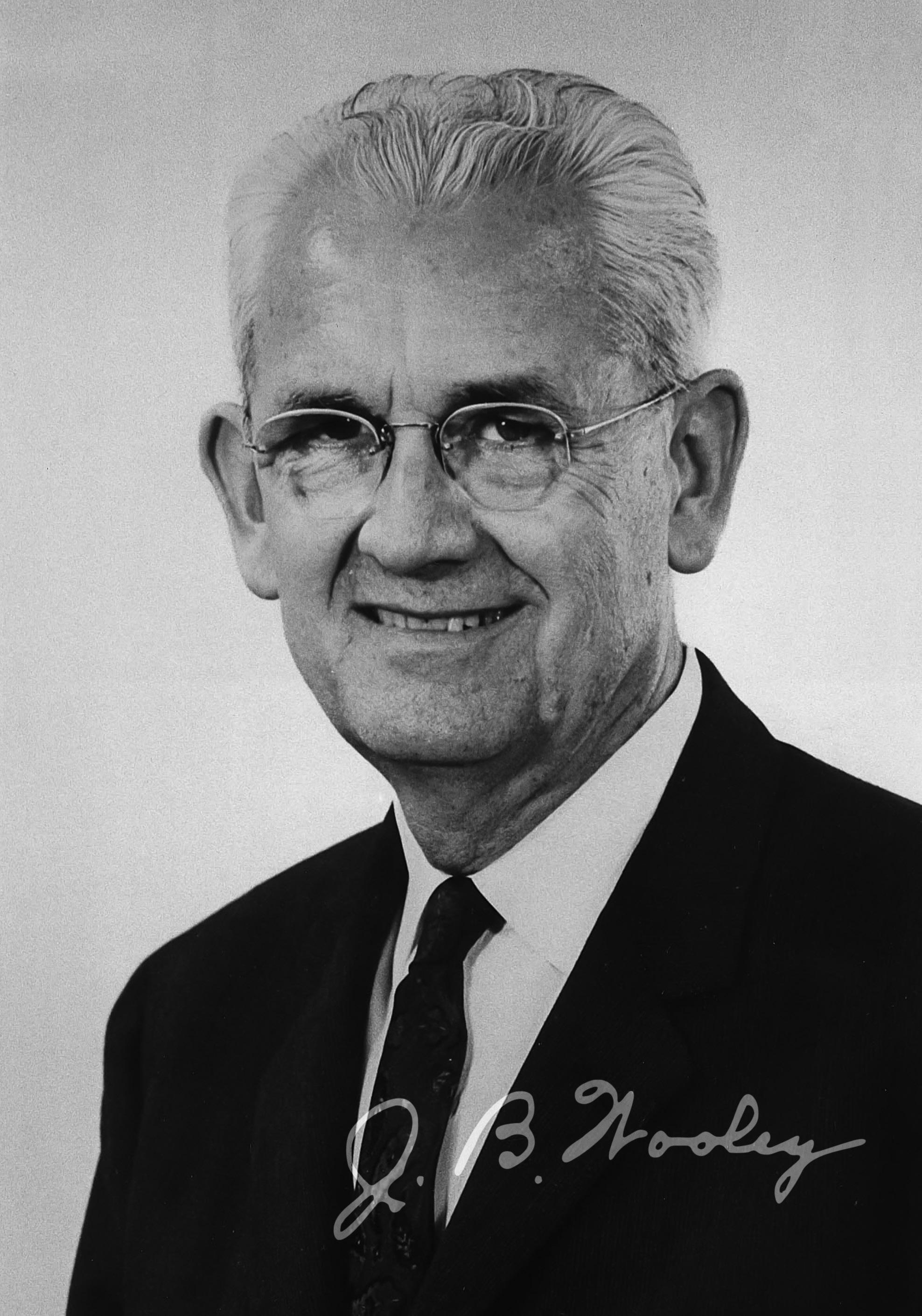
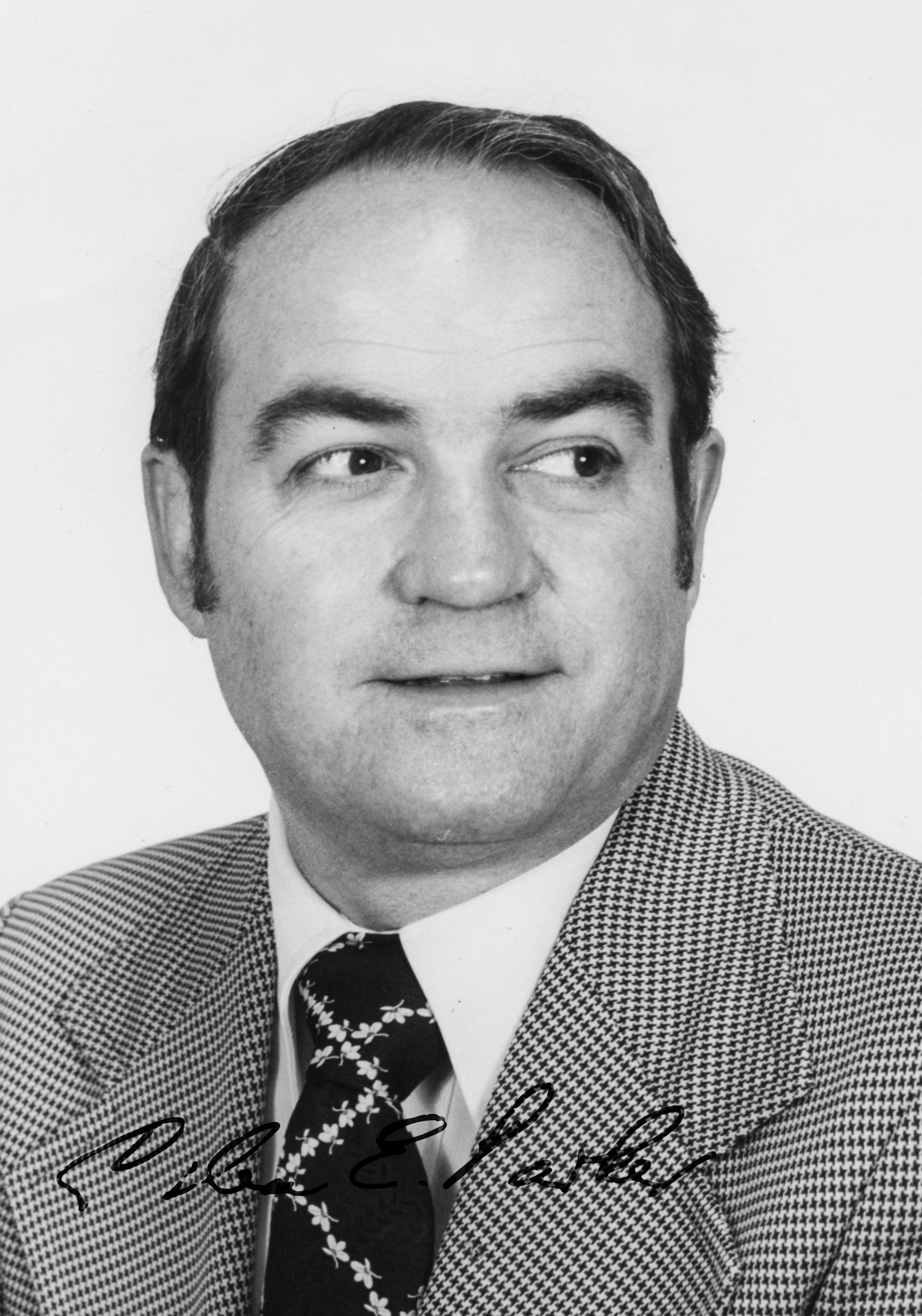
Clea Edward Parker
1968–1980
Clea E. Parker holds the distinction of being the first Southeastern alumnus to serve as the school’s president. Born in Mandeville, Louisiana, Parker was deeply connected to the institution and its mission, having earned his undergraduate degree at Southeastern before acquiring master’s and doctorate degrees in education from Louisiana State University. His tenure as president marked a period of substantial growth and transformation for Southeastern, which achieved university status during his leadership.
Parker’s presidency was characterized by significant infrastructure development and a commitment to academic expansion. Under his guidance, Southeastern saw the construction of major facilities, including the University Center, Cate Teacher Education Center, and the Humanities Building (now D Vickers Hall). He was also instrumental in securing legislative approval for the current Sims Memorial Library and the School of Nursing building in Baton Rouge. These advancements not only supported a growing student population but also reflected Parker’s vision for a modern, forward-thinking university.
A hallmark of Parker’s leadership was his opendoor policy, which allowed him to build meaningful
connections with students, staff, and faculty. Although his time was often stretched thin in the course of managing and advancing the institution, he could still be seen every morning having coffee in the cafeteria while engaging in conversations, earning him a reputation as an approachable and empathetic leader. Parker also expanded student involvement by appointing attendees to universitywide committees and prioritizing their voices in decision-making processes.
Beyond infrastructure and student engagement, Parker championed employee well-being, advocating for improved working conditions and pay. His efforts to enhance graduate programs and foster academic excellence left a lasting impact on Southeastern’s reputation as a regional leader in higher education. After retiring in 1980, Parker was named president emeritus and continued contributing to education as an evaluator and liaison with the Louisiana State Board of Education.
Parker’s 12-year tenure left an enduring legacy, shaping Southeastern into a university poised for future success. His leadership combined practical decision-making and energetic advocacy for the university with a personal commitment to fostering a supportive, vibrant academic community.
I spend 50 to 60 percent of my time trying to find sources of revenue to aid in the development of this school.
James Larry Crain
J. Larry Crain led Southeastern through a period of modernization and academic enhancement. A native of Mississippi, Crain earned his PhD from the University of Southern Mississippi. His connection to Southeastern began as a faculty member in the biology department. He later ascended to administrative roles, including secretary of the Louisiana Department of Culture, Recreation, and Tourism, before returning to lead Southeastern as its president.
Crain’s tenure as president was marked by a shift toward strengthening the university’s academic reputation. He focused on raising academic standards, promoting faculty research, and introducing a university-wide honors program to recruit top students. His administration also achieved significant milestones, such as acquiring the Turtle Cove Environmental Research Station, a facility dedicated to environmental studies and research. Crain sought to position Southeastern as a regional leader in both education and cultural
development, emphasizing the institution’s role in advancing the Florida Parishes.
One of the most challenging decisions of Crain’s presidency was the discontinuation of Southeastern’s football program in 1985. Facing mounting financial pressures and mid-year budget cuts, Crain prioritized academic programs over athletics, reallocating the football budget to bolster library collections, student recruitment, and teaching resources. Though controversial, the move reflected his commitment to Southeastern’s long-term stability. Reflecting on the financial struggles of his time, Crain said, “I really wonder what we could have done if we had money.”
Crain resigned in 1986 to become the system president for the Board of Trustees for State Colleges and Universities. His tenure remains notable for its emphasis on academic excellence, fiscal responsibility, and a forward-thinking vision for Southeastern’s future.
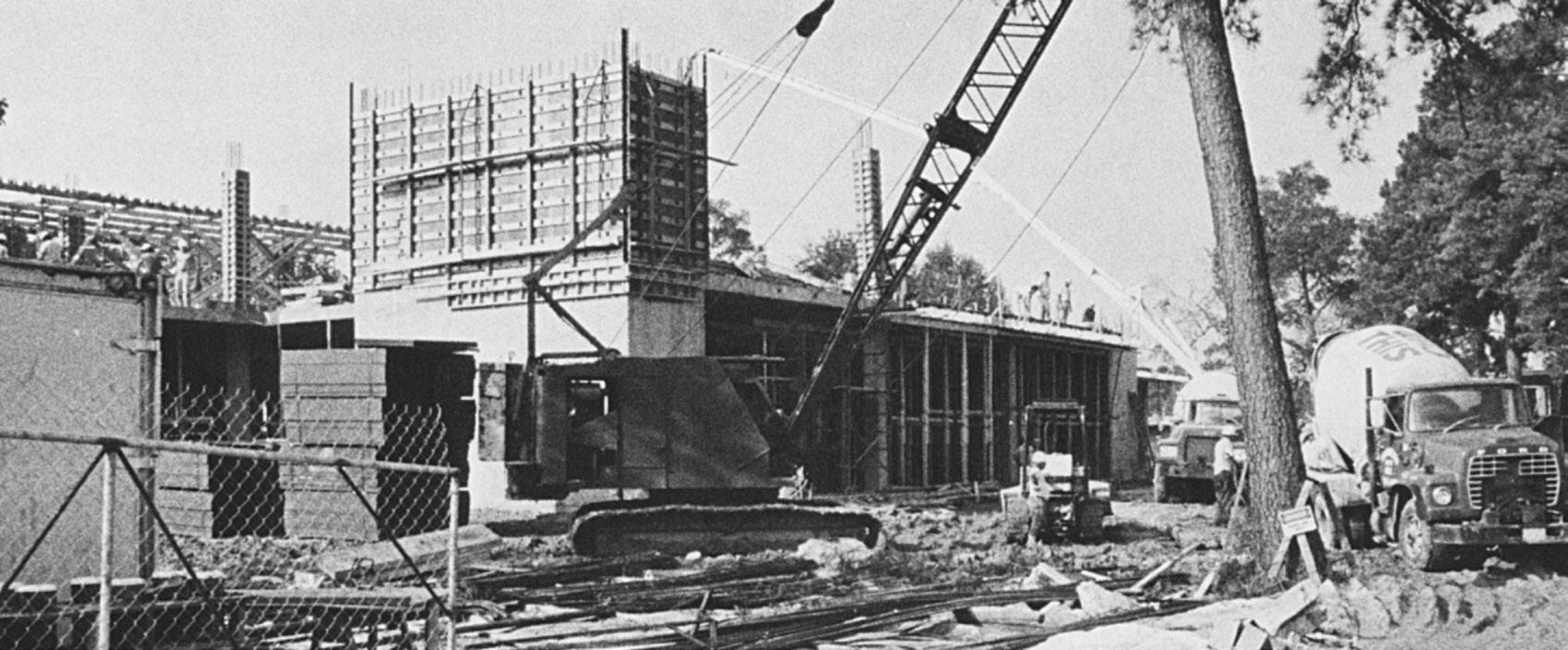
Sims Memorial Library construction, 1984

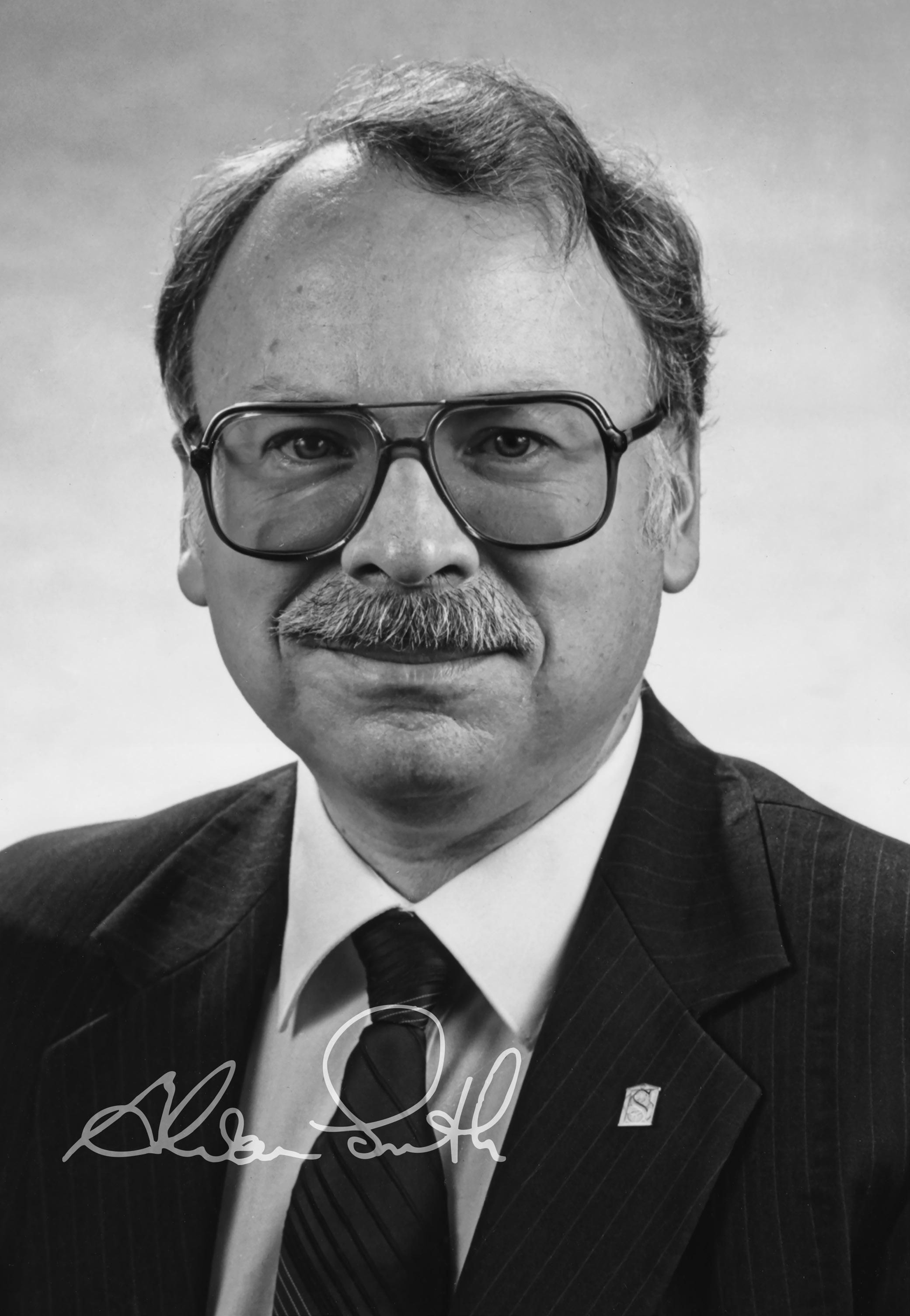
Grant Warren Smith
1986–1995
G. Warren Smith, a chemist with an affinity for the arts, presided over Southeastern during its most significant growth period. Before becoming president, Smith served as Southeastern’s vice president for academic affairs beginning in 1984, following a distinguished academic career that included teaching posts at Cornell University and the University of Alaska and a deanship at the University of Houston. His tenure as president began in 1986 and spanned nearly a decade of remarkable achievements.
Under Smith’s leadership, enrollment doubled at Southeastern, increasing from approximately 7,000 students in 1986 to over 14,000 by 1995, making it the fastest-growing university in the nation during that time. Despite facing persistent budget challenges, Smith focused on strengthening academic programs. The College of Business and its accounting department earned national accreditation, the College of Education excelled in national exams, and the Nursing School commonly saw all its graduates pass their licensing examinations. Smith also established the College of Basic Studies, designed to provide academic
support for incoming students with deficiencies in key areas, thus broadening access to higher education through Southeastern.
A champion of the arts, Smith supported the creation of Fanfare, which evolved into a regionally acclaimed month-long celebration of the arts, humanities, and social sciences. His holistic vision for the university included enhancing faculty research, securing external grants, and adding over 150 new faculty positions to support the rapidly growing student body.
Although well liked among the university community, Smith’s presidency ended in 1995 amidst tension with the Board of Trustees for State Colleges and Universities. He remained at Southeastern as a professor of chemistry and violinist in the university chamber orchestra before becoming president of Pennsylvania’s Slippery Rock University in 1998. His legacy at Southeastern is remembered as one of extraordinary growth, resilience, and academic advancement.
My fondest hope is that the state of Louisiana will someday recognize what these valiant folks (Southeastern faculty, staff, community) have accomplished here.
Sally Ilene Clausen
Sally Clausen became Southeastern’s first female president in 1995, distinguishing herself as a dynamic and proactive leader with a deep commitment to advancing higher education. Her background included roles as a student affairs officer and legislative liaison at Southeastern, as well as a leadership position in Governor Edwin Edwards’ administration. This blend of institutional knowledge and political acumen uniquely equipped her to tackle the challenges facing Southeastern during her tenure.
When Clausen stepped into her role, Southeastern was grappling with a severe financial shortfall, exacerbated by years of underfunding. The university’s enrollment, close to 15,000 students, far exceeded the resources designed for a much smaller population. Faculty salaries had stagnated for nearly a decade. Clausen addressed these issues head-on, leveraging her advocacy skills to secure increased funding. Her efforts led to long-overdue salary increases, elevating faculty pay above the state average and boosting morale across campus.
In 1998, Clausen reinvigorated the university’s historic “Macedonian Call,” urging the Southeastern community to appeal to state legislators for better funding. Her approach mirrored the strategy used decades earlier by Clark and reinforced the university’s commitment to overcoming financial inequities. Clausen also spearheaded substantial improvements to the campus infrastructure, including the construction of a new biological sciences building; renovations to the Cate Teacher Education Center; and the development of Southeastern Oaks, which provided modern housing options for students. Her tenure also marked a significant shift toward private fundraising, leading to the creation of endowed professorships and scholarships.
Clausen concluded her presidency in 2001 to become the first female president of the University of Louisiana System, continuing her advocacy for education at a statewide level. At Southeastern, her legacy is defined by her tireless efforts to secure resources, support faculty, and improve the university’s standing in the region and beyond.
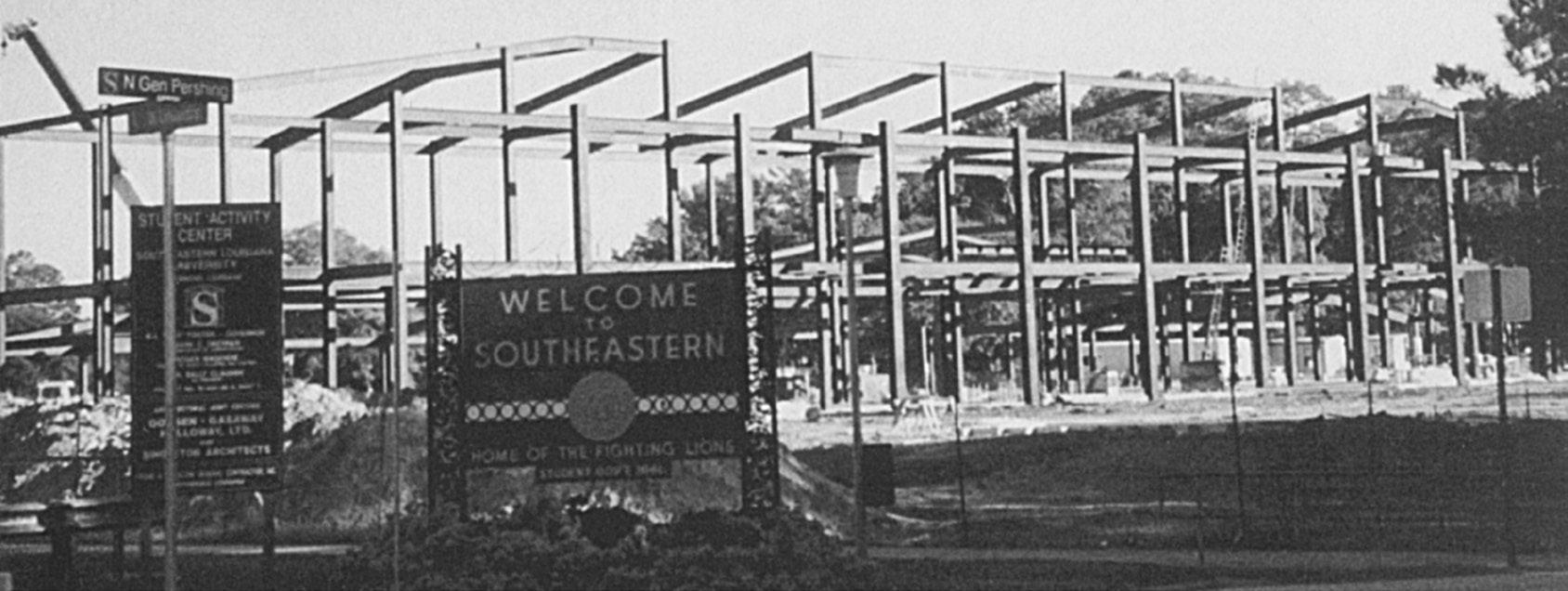
Pennington Student Activity Center construction, 2000
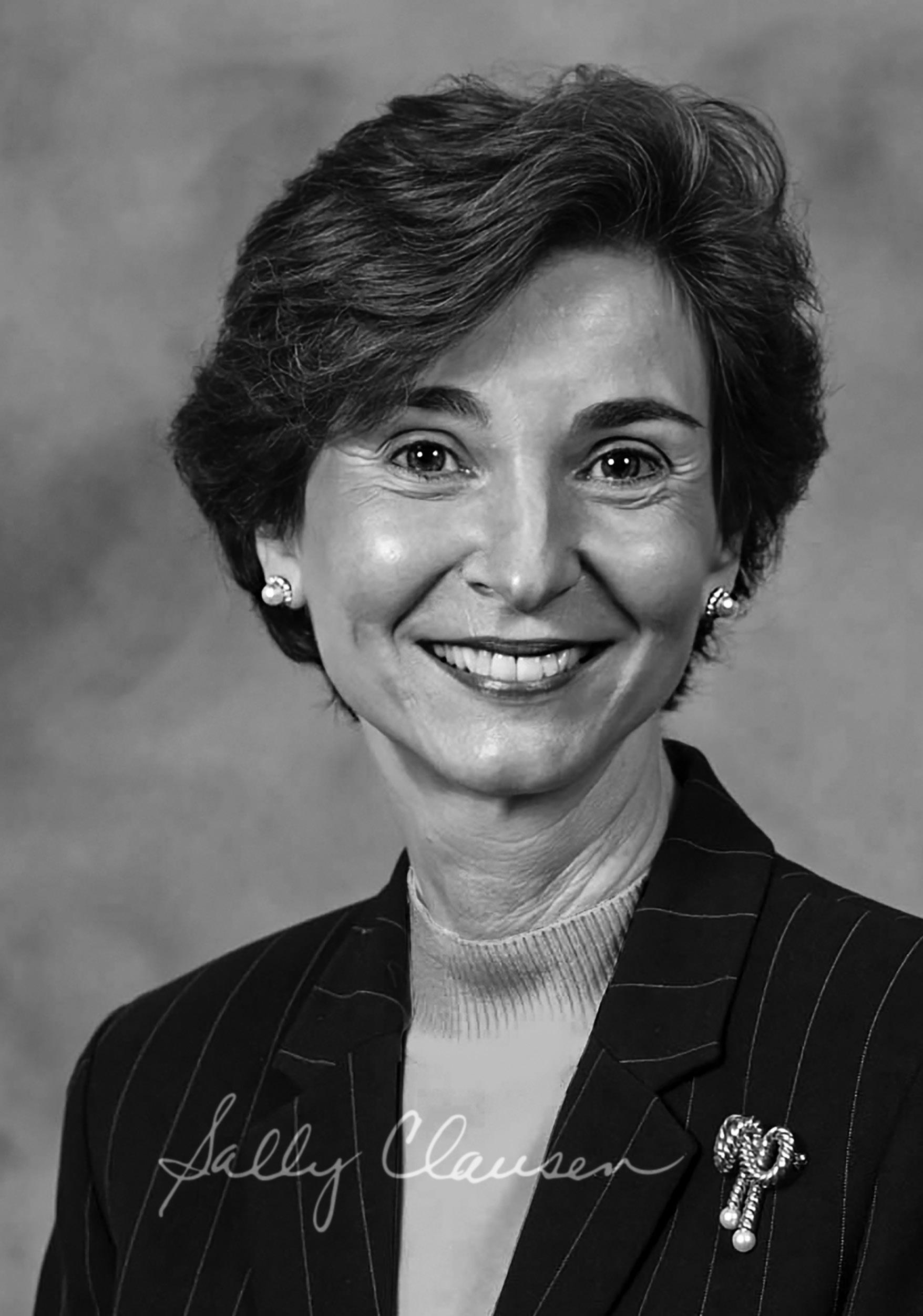
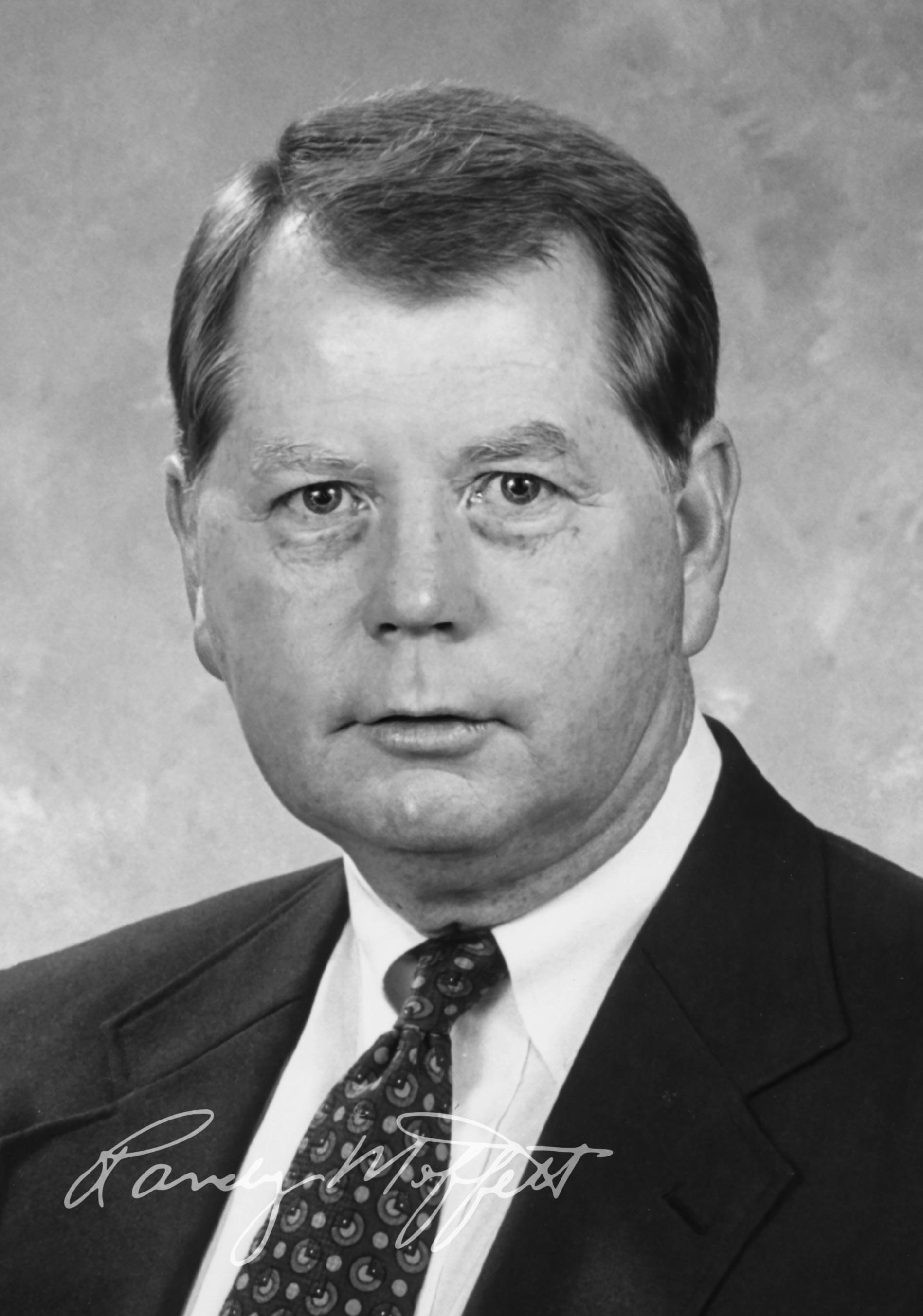
Michael Randolph Moffett
2001–2008
Randy Moffett’s tenure as president was marked by his strategic vision and dedication to enhancing the university’s academic and athletic profile. Moffett’s association with Southeastern began as a professor of education, where his leadership abilities quickly propelled him into administrative roles, including provost and vice president for academic affairs. When Sally Clausen transitioned to the presidency of the University of Louisiana System, Moffett was named acting president and later assumed the permanent role.
One of Moffett’s most notable achievements was the revival of the football program in 2003 after an 18-year hiatus. Recognizing the program's importance to campus life and alumni relations, Moffett worked to reestablish football and all its surrounding elements as a cherished part of Southeastern traditions. This effort revitalized
school spirit, increased community engagement, and enhanced the university’s public image.
In addition to athletics, Moffett emphasized academic excellence and institutional growth. He was instrumental in the creation of “Vision 2005,” a strategic five-year plan designed to elevate Southeastern’s educational standards and expand its influence within Louisiana.
In 2008, Moffett left Southeastern to follow in Clausen’s footsteps as president of the University of Louisiana System, where he continued advocating for higher education throughout the state. His time at Southeastern is remembered for the significant strides made under his guidance and the strong foundation he built for the university’s future success.
It is our desire at Southeastern to continue to grow and progress, to offer the academic programs that will enable our region to not just recover (Katrina), but to regenerate into the kind of state we all envision Louisiana becoming. That is our pledge to the people of Louisiana.
John Luther Crain
John Luther Crain, a native of Franklinton, Louisiana, saw six decades at Southeastern, beginning with his undergraduate studies in 1978 and culminating in his interim presidency from 2008 to 2009 then presidency from 2009 to 2023. Crain earned a bachelor’s degree in accounting and an MBA from the university before furthering his education with a doctorate in accountancy from the University of Mississippi. His professional journey at Southeastern began in 1987 as an assistant professor of accounting. Over the years, he held various roles, including department head, president of the Faculty Senate, and provost and vice president for academic affairs. In July 2008, he was appointed interim president, and he officially became the university’s 14th president the following February.
During Crain’s presidency, Southeastern navigated numerous challenges, including significant state budget reductions, natural disasters such as Hurricane Ida, and the COVID-19 pandemic. Despite these obstacles, he spearheaded major facility and infrastructure improvements, such as
the completion of a new Student Union and the Computer Science and Technology Building; the construction of new residential facilities, including the innovative green energy-powered Ascension Hall and Twelve Oaks Hall; and the renovation of several academic buildings. Under his leadership, the university also launched a unified brand platform to enhance its profile and positively impact student recruitment and retention.
In recognition of his distinguished service, the University of Louisiana System Board awarded Crain the title of president emeritus in May 2024. Former UL System President and CEO Jim Henderson remarked, “The depth of service Dr. Crain has given to Southeastern over his enduring career is rare and admirable. His invaluable contributions will forever be a source of inspiration to the Lions and the higher education community.”
Crain’s tenure is remembered for his calming, steadfast leadership; commitment to academic greatness; and unwavering dedication to the Southeastern community.
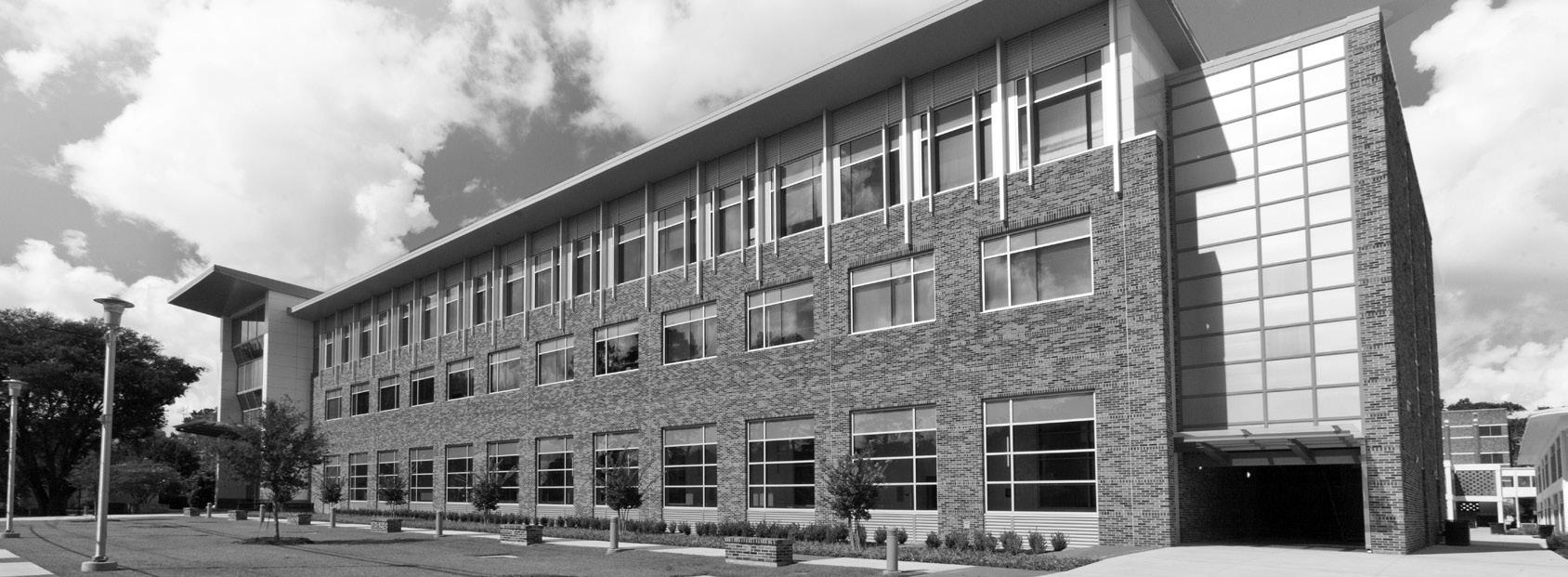
Computer Science and Technology Building, 2018
2008–2023
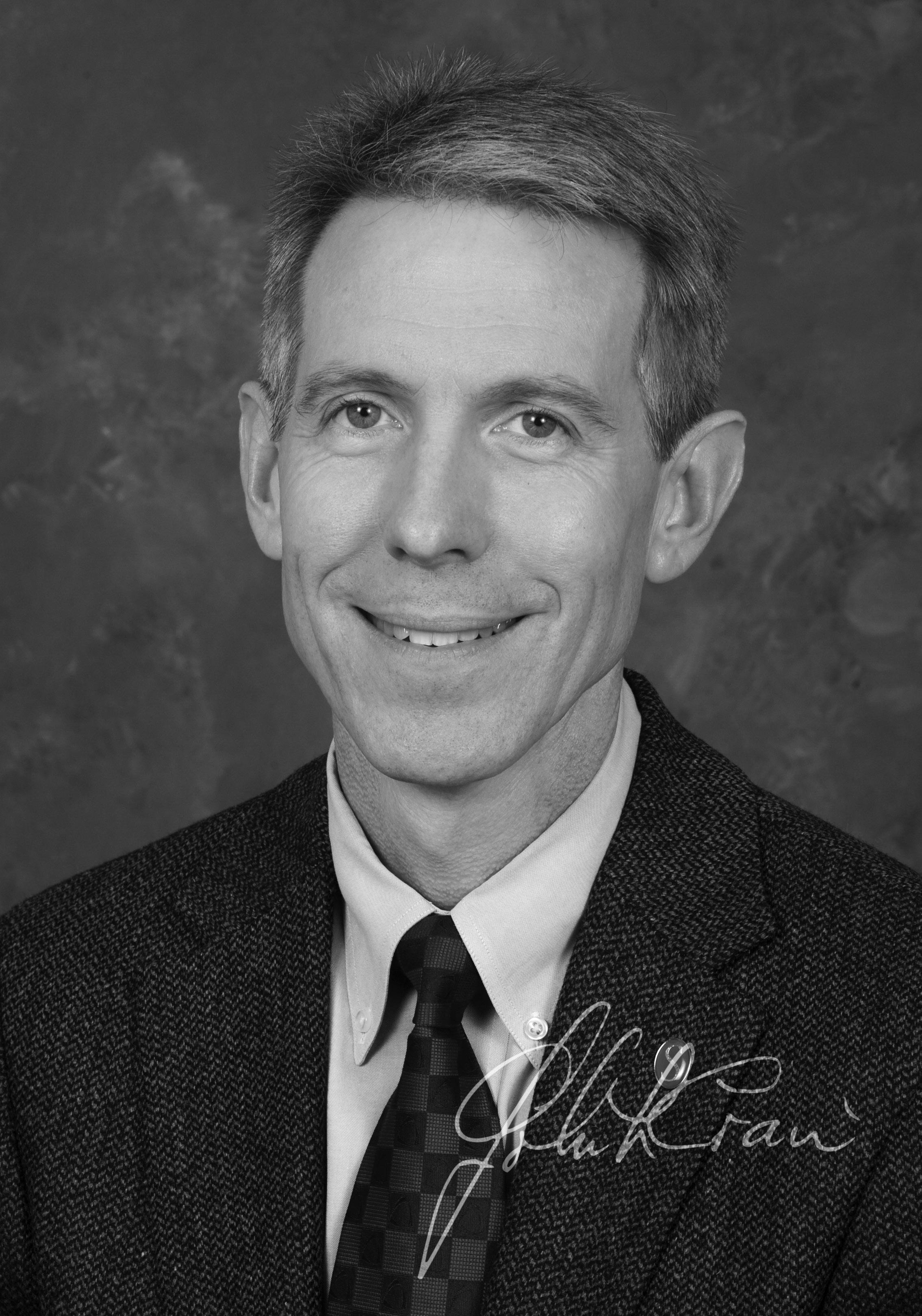
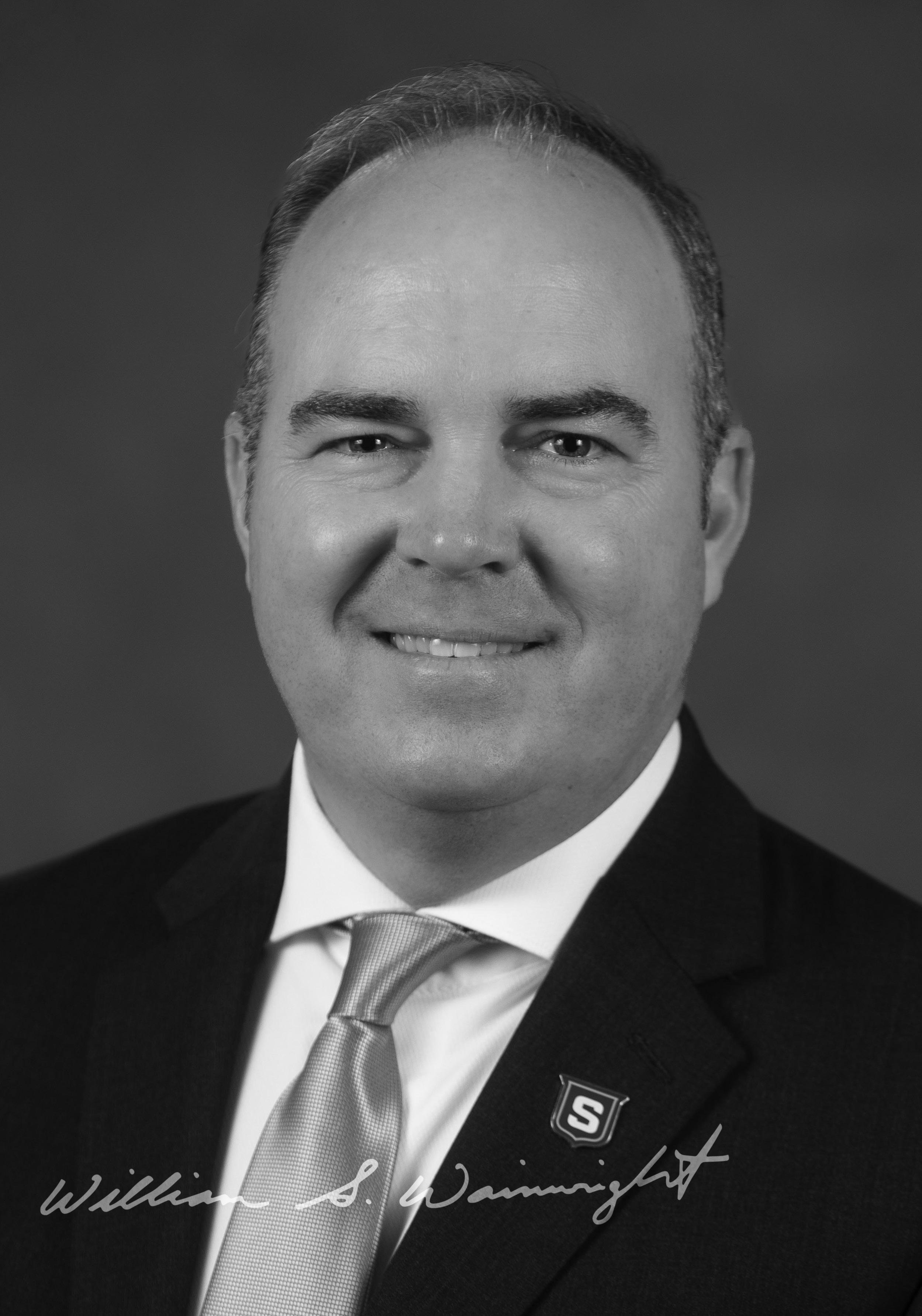
William Scott Wainwright
2023–Present
William S. Wainwright became the 15th president of Southeastern on April 23, 2023. With over 24 years of leadership experience in higher education, he previously served as chancellor of Northshore Technical Community College (NTCC), where he oversaw exponential growth, tripling enrollment and expanding campuses. His tenure there earned NTCC recognition as one of the fastest-growing community colleges in the nation. Wainwright’s strong academic foundation includes degrees in criminal justice, adult education, and higher education administration, culminating in a PhD from the University of New Orleans, which prepared him for his impactful leadership roles.
Since taking office at Southeastern, Wainwright prioritized enhancing the university’s strategic vision. He advanced “Vision 2025,” focusing on academic innovation, student success, and regional economic impact. His leadership has included efforts to elevate enrollment and status, ensuring Southeastern remains accessible and competitive in a challenging higher education landscape. Wainwright also oversaw the completion of key campus improvement projects,
including the D Vickers Hall renovation and the Robin Roberts Broadcast Media Center addition, the Dugas Hall renovation, and the construction of the academic and athletic training facility addition at Dugas Hall in partnership with North Oaks Health System. These developments have bolstered the university’s facilities and reinforced its commitment to providing a comprehensive and modern student experience.
In 2024, Wainwright launched the public phase of Southeastern's largest-ever fundraising campaign to mark its Centennial, which reached over $100 million by April 2025, supporting future growth. He has also served on regional and state boards, including Northshore Business Council; Greater New Orleans, Inc.; Better Louisiana; and United Way of Southeast Louisiana.
Building on a century of dedication and vision from his predecessors, Wainwright’s leadership is ushering Southeastern into a bold era of growth and innovation, strengthening its legacy as a beacon of higher education and a driving force for progress in Louisiana.
My best days are when I’m able to engage with our students and faculty. I’m able to see the impact of our faculty on our students, whether it’s through their success in the classroom, their success after graduation, or their success as they rise through the ranks in business and industry.
CREATED BY
Southeastern Louisiana University Office of University Marketing and Communications
PRINTING PROVIDED BY Southeastern Louisiana University Foundation
Premier Sponsor of the Centennial
